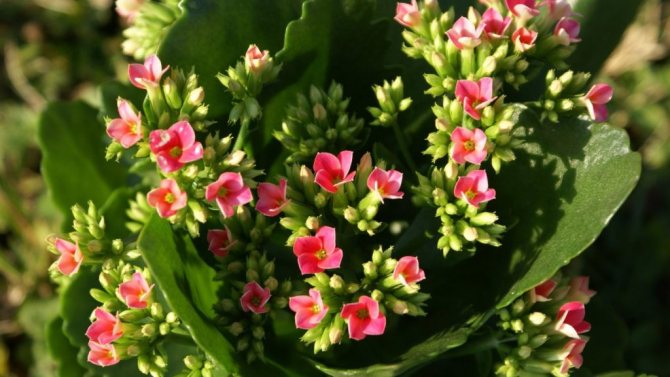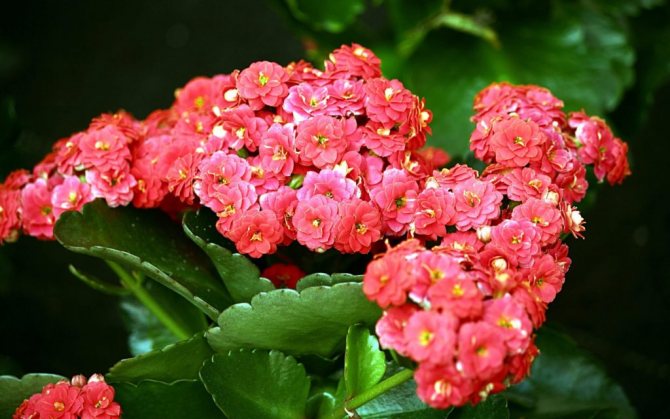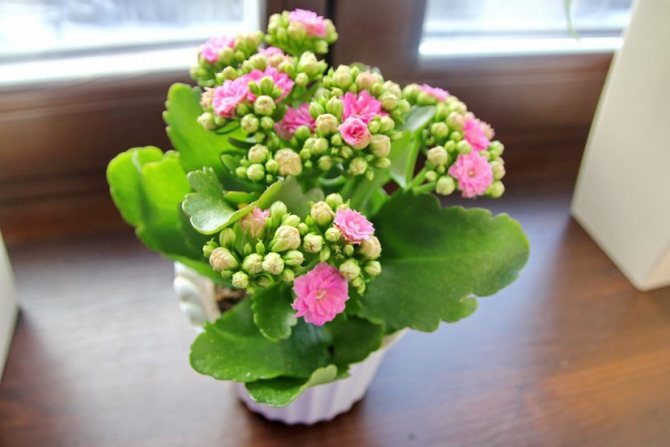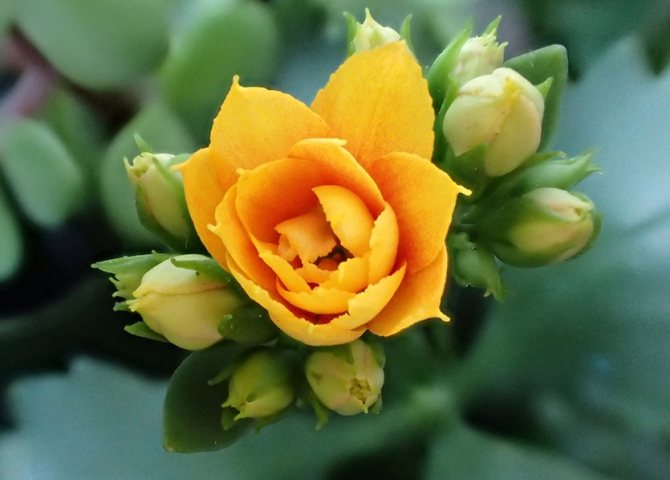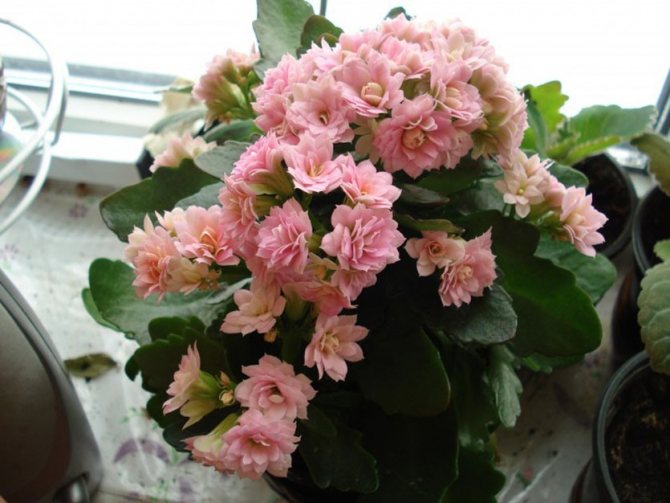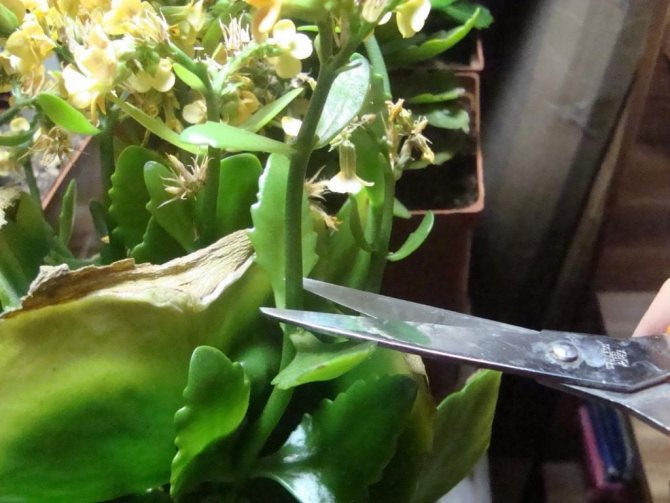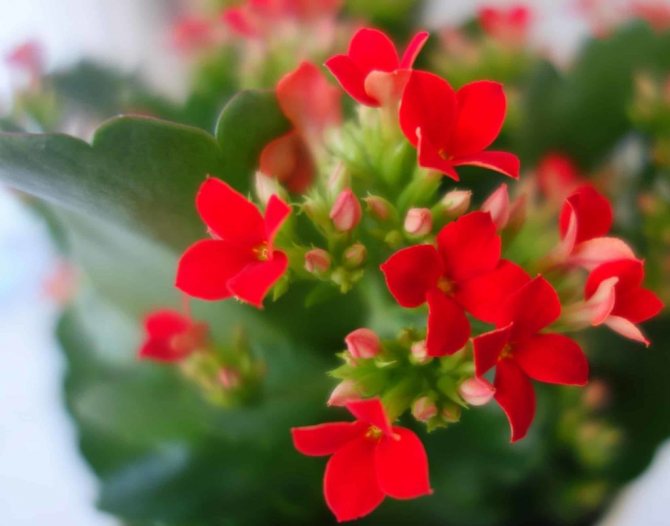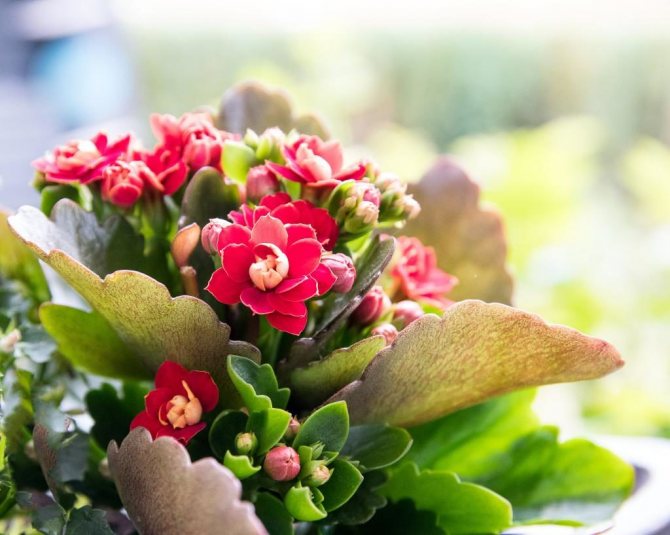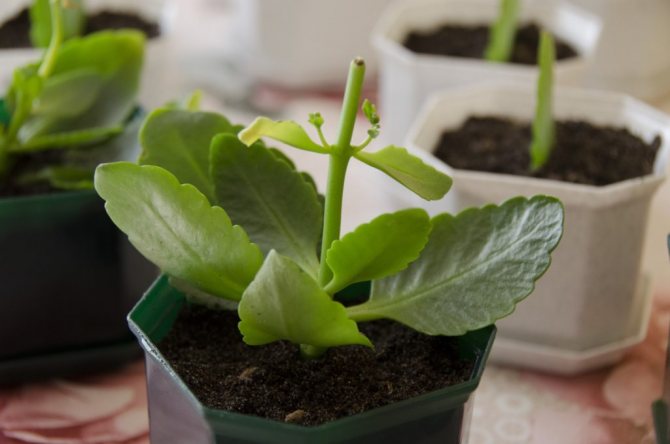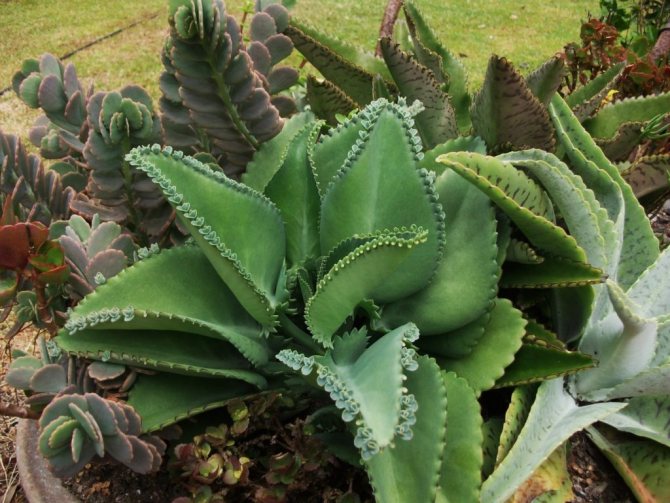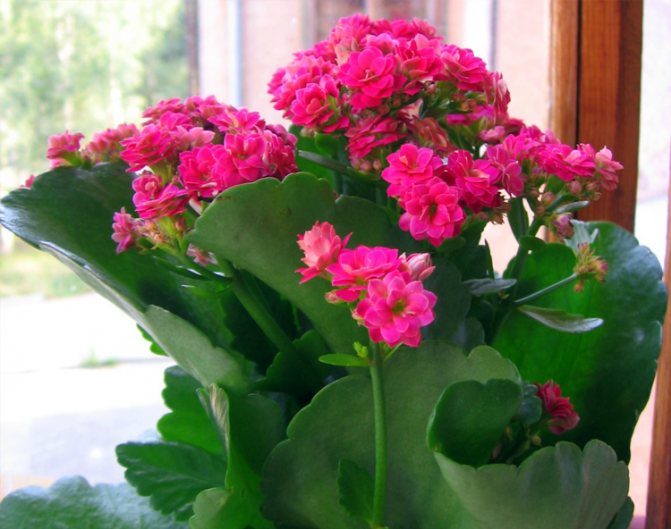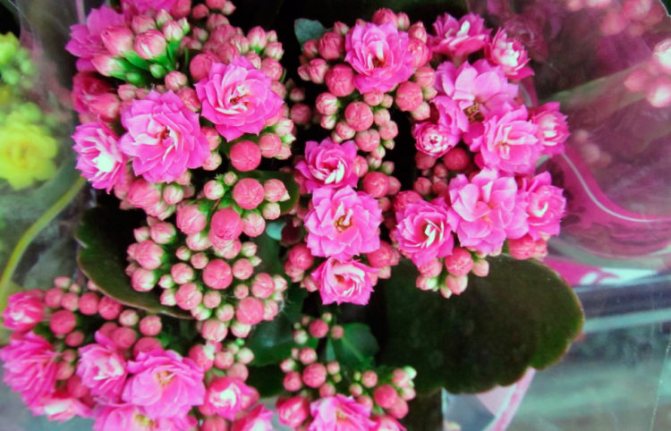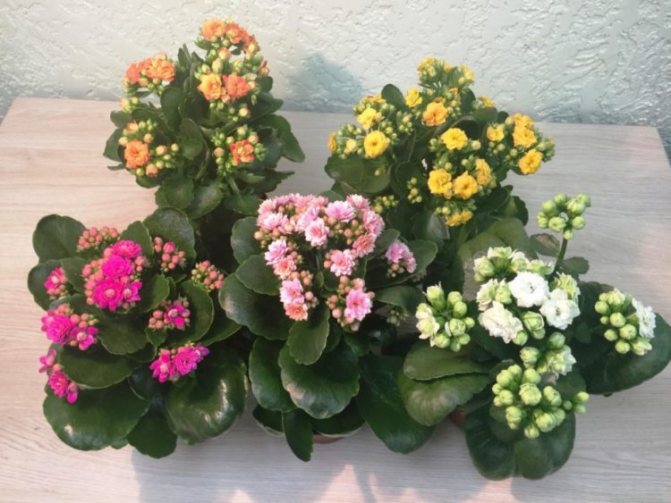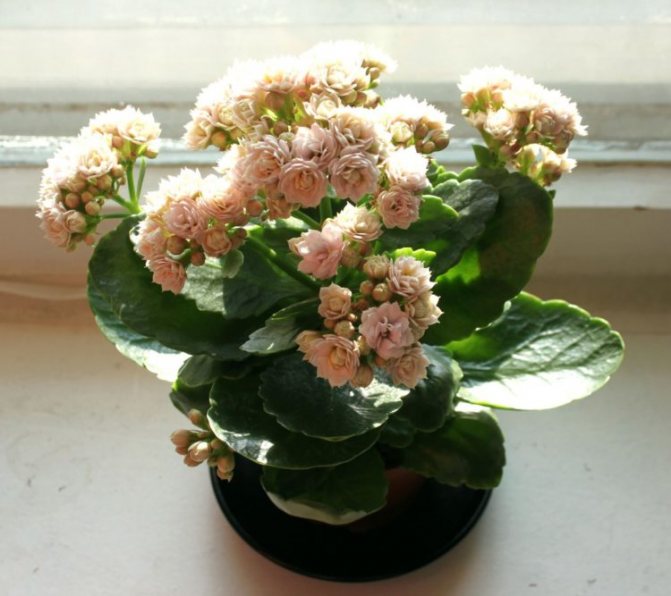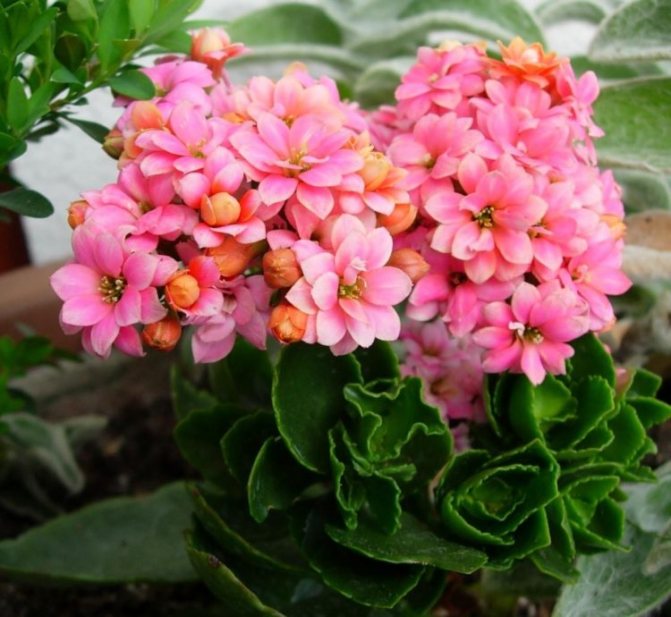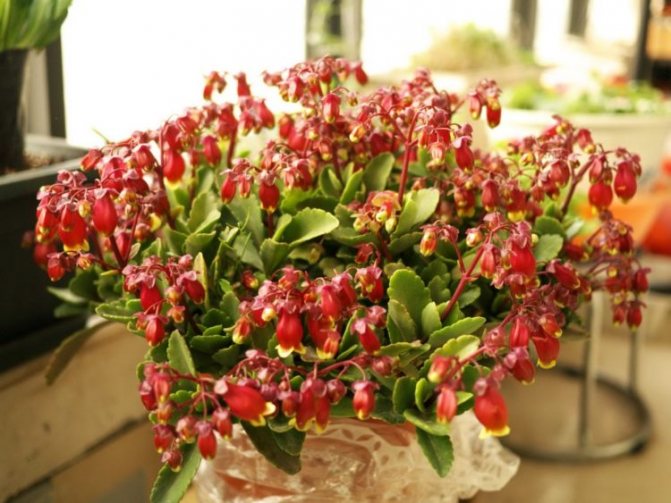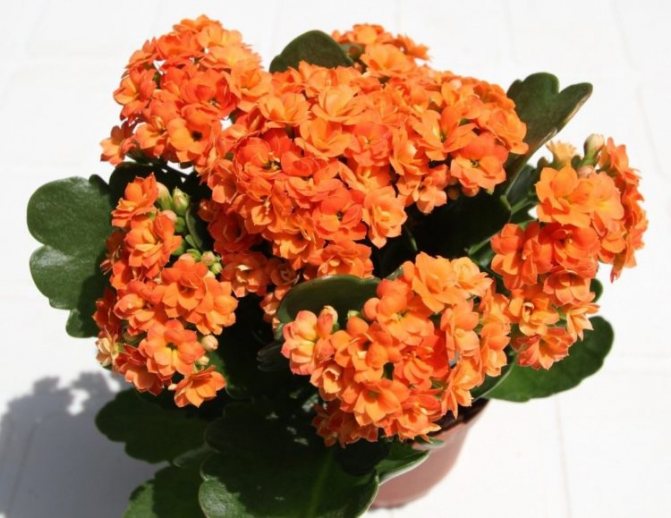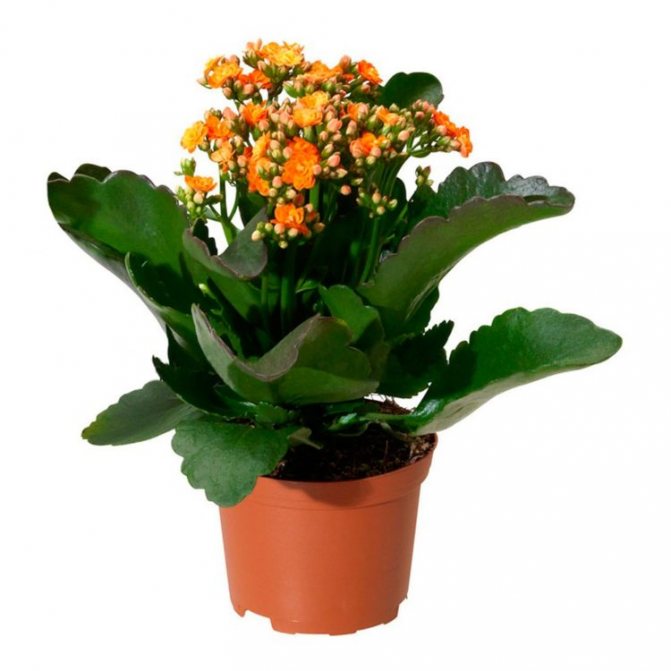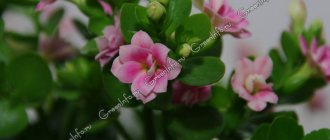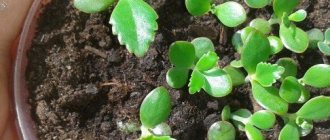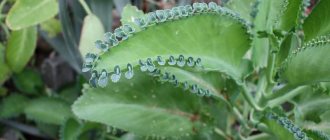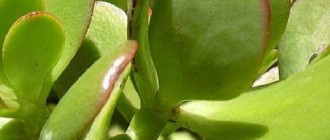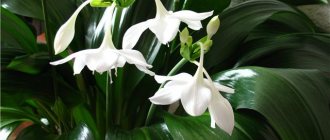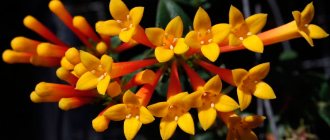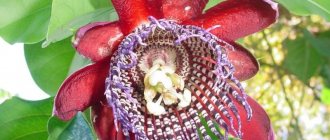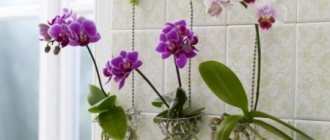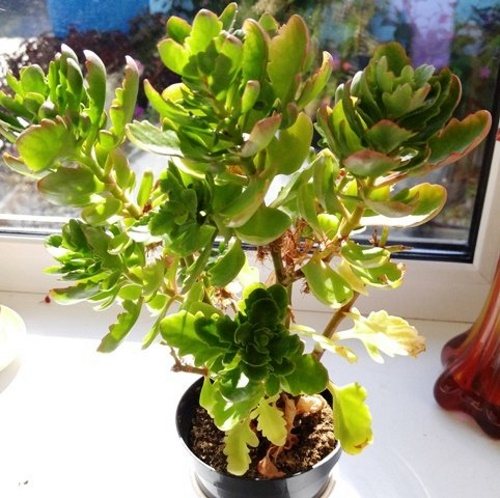
Kalanchoe, especially its flowering varieties, are very popular among flower growers. An unpretentious succulent with lush bouquets of inflorescences of the most varied colors and shapes does not require special care, moreover, it has a very beautiful appearance. Such a plant can be used as a gift for a holiday, or you can decorate your home with it. However, for all its unpretentiousness, the cultivation of Kalanchoe has one nuance, on which its flowering in the future directly depends.
After the end of flowering, the bush should rest and gain strength. If you do not provide him with a dormant period, flowers can not be expected.
So, what should you do when the Kalanchoe has faded? Read the article about caring for Kalanchoe!
Why does Kalanchoe not bloom at home?
To find out the reason for the sterility of all attempts to cause the appearance of ovaries on a plant, you need to understand its life cycle. Flowering is the logical completion of the vegetative turnover, which in most plants repeats from year to genus at the same time. This particular flower is characterized by the appearance of new buds from December to July. There may be several reasons for this process to be disrupted - and each of them can help to understand why the decorative Kalanchoe does not bloom:
- unsuitable climatic conditions;
- irrigation schedule violations;
- refusal to feed the plant;
- wrong choice of placement on the windowsill.
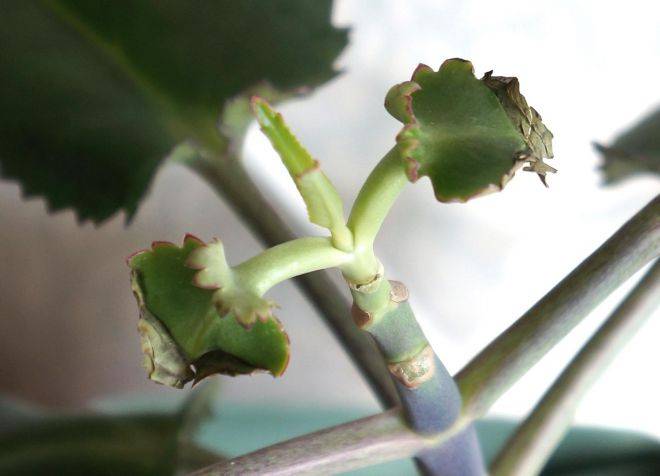
Why does Kalanchoe not bloom and grow up?
Among the widespread reasons why new ovaries do not appear is the overly vigorous growth of the succulent. Kalanchoe does not bloom and stretches when its owner does not monitor the height of the houseplant and does not limit it. The optimal value for it does not exceed 25-35 cm.The stem can grow up to 40 cm if the following mistakes are made in caring for it:
- Refusal to pinch. It arises from the fear of infection or death of the plant, which can be avoided by disinfecting the wound.
- A lot of fertilizers. Overfeeding prevents the formation of ovaries, because fertilizers stimulate the expansion of the leaf plate.
- High ambient temperature. Succulents consider heat to be the best environment for the formation of a tall bush, therefore, when it is stuffy, Kalanchoe does not bloom. It is not difficult to decide what to do with this: the plant must be transferred to a cool place.
Kalanchoe does not grow or bloom
When the plant is restricted in growth and does not plan to bloom, whitish spots or cracks appear on the leaves. The reason why the Kalanchoe does not bloom belongs to the following list:
- depleted soil in a pot;
- improperly compiled soil mixture;
- recent transplant with root trauma;
- earthworms in the ground.
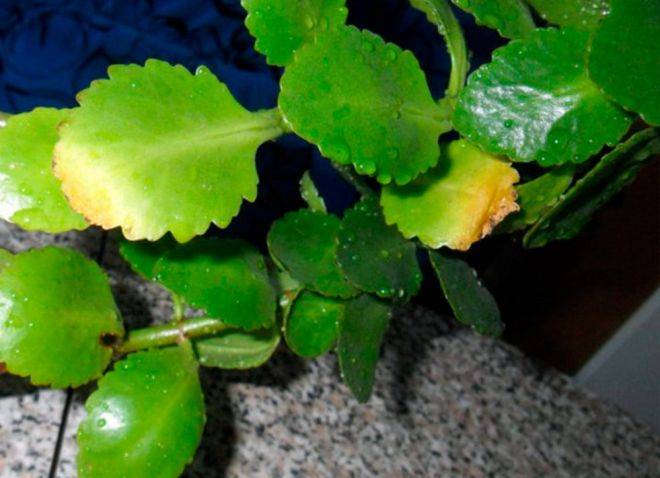

Why did Kalanchoe stop blooming?
The growth of existing flowers and the death of buds freezes if the air becomes cool or drafts appear. If the decorative Kalanchoe does not bloom, but the temperature regime has not changed, this can only mean one thing - the succulent is in a stressful state. There are three triggers for this depression:
- natural aging of the stem;
- close heating source;
- location next to citrus or ornamental tomatoes.
How Kalanchoe reproduces
The new plant can be propagated. This is done in different ways:
- rooting cuttings;
- sowing seeds;
- dividing a large bush;
- planting a separate leaf.
The third method is not always successful, since a new bush or the main one can quickly wither away. The most common and easiest method is rooting cuttings.
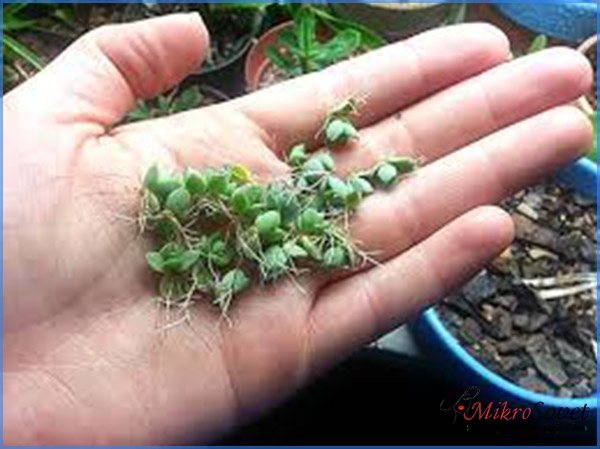

The small stem quickly takes root, which is fixed in the new soil. In a month, there will be a lush bush in its place. Not only cuttings take root well, but also leaves.
When planting Kalanchoe seeds, they are introduced into moistened soil. Then cover the ground with polyethylene, periodically conduct airing and watering. For fast germination of seeds, diffused light is required. The container should be in a warm place. After pecking the seeds, the flowerpot is rearranged in the sun.
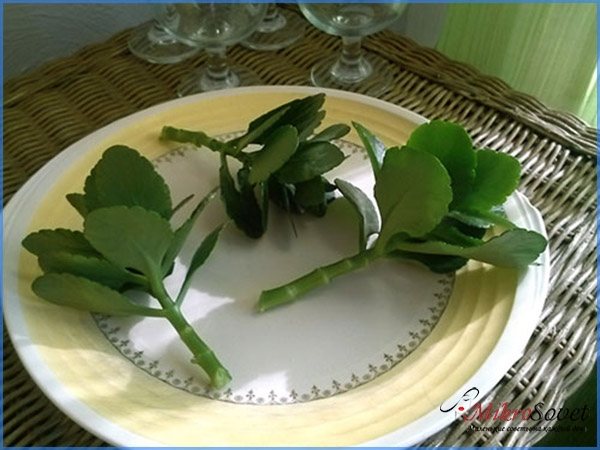

How to make Kalanchoe bloom?
At the same time, stress can spur bud ejection, but only if it is short-lived and externally controlled. Experts know what to do if the previously blooming Kalanchoe no longer blooms and suddenly has lost all the ovaries. The sequence of actions should be as follows:
- Increase the frequency of watering. The soil under the succulent plant should be constantly moist for 2-3 days.
- Double dose of fertilizer. Spontaneous feeding outside the plan to force the plant to give growth to "dormant" ovaries.
- Loosening the soil at the roots. Aeration of the root system enhances bud immunity.
Blossfeld's Kalanchoe does not bloom - what to do?
There are at least 130 varieties of the Blossfeld variety: each of them has small double flowers of a wide variety of shades - pink, orange, red and yellow. Blossfeld's Kalanchoe does not bloom if it grows in a darkened place He also does not like direct light, but responds with a large number of ovaries to bright lighting. You can determine the correctness of care that stimulates flowering by two signs:
- The presence of a red border on the leaves of the plant. When Kalanchoe does not bloom, ovaries do not appear if the leaves have a uniform green color. The red "strip" signals that the plant is receiving the right amount of water and nutrients.
- Absence of fungal diseases. If brown spots appear on the leaves, they are removed, and the cut points are treated with a fungicide.
Kalanchoe Kalandiva does not bloom
The Kalandiva variety is considered the most suitable for living in an apartment or house. Its bright double flowers gather in large inflorescences, so if one inflorescence dies, the petals of the neighboring ones also dry out. It has one feature: while other succulents lose their ability to flower due to moisture on the leaves, Kalandiva, even if we consider that it is a subspecies of Kalanchoe, does not bloom if it is not sprayed. It is hard to tolerate dry air, so you need to spray water at room temperature on the plant at least 2-3 times a day.
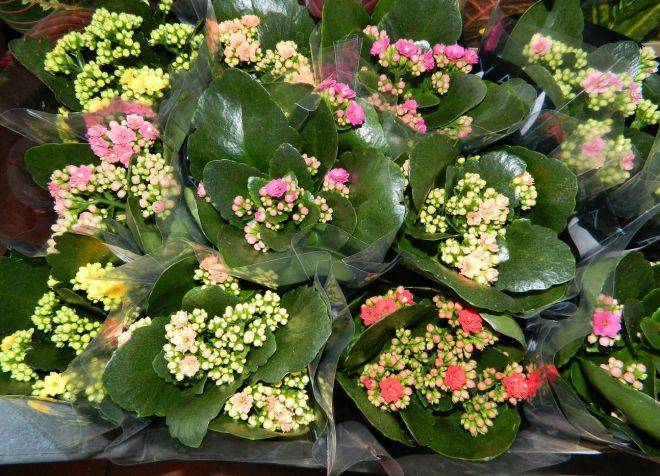

How to cut Kalanchoe to bloom?
Pruning is recommended for any species of this ornamental plant as a flowering stimulating measure. The process is the removal of excess leaves or painful peduncles to prevent the development of diseases and to give a neat shape. Since, with the development of the stem, the upper shoots tend to thin out and become sterile, it is important to know how to pinch the Kalanchoe correctly so that it blooms. These two processes (pinching and cutting) are similar, so they can be combined into one:
- First you need to choose the weakest tops of the plant that have not been covered with flowers for a long time.
- A small part of the stem is removed with scissors or fingers so that the remaining wound is small.
- After pinching, the edges of the stems are sprinkled with ash or charcoal to prevent dying off.
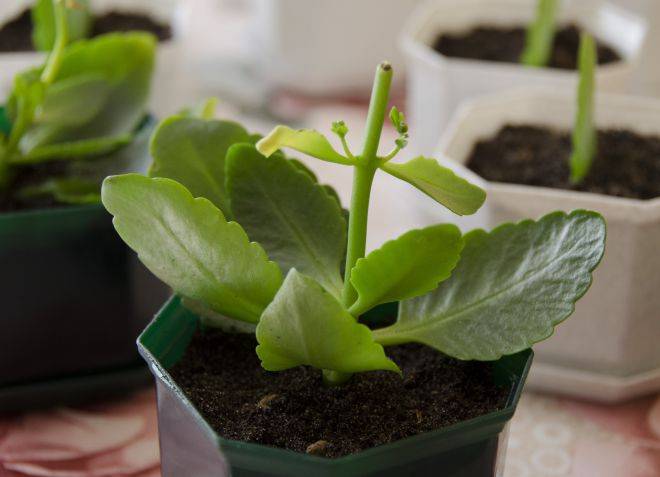

Kalanchoe flower - how to care for it to bloom?
In order for ovaries to appear on a houseplant, the care regime for it must be radically revised. You should not think about how to make Kalanchoe bloom at home - you just need to exclude factors that impede this process. These include:
- Excess sunlight. Constant stay on the windowsill, located on the sunny side of the dwelling, makes the plant grow in height, spending all the juices on this process.
- Avoiding excessive watering. Shrub leaves are able to accumulate moisture and spend it gradually, so a lack of water is not as destructive as its excess. In summer, the procedure must be repeated once a week, in winter - twice.
- Fertilization with a special complex for succulents. If the Kalanchoe does not bloom, whatever its owner is trying to do, this may mean that he needs a mineral complex with potassium, sodium and manganese in the composition.
How to prune different species
And now we will figure out how to cut Kalanchoe of different varieties. It is noteworthy that today about 200 varieties of this flower are known. However, only a few can be grown at home. For almost all varieties, the pruning instruction is the same, but for some individual representatives there are special rules.
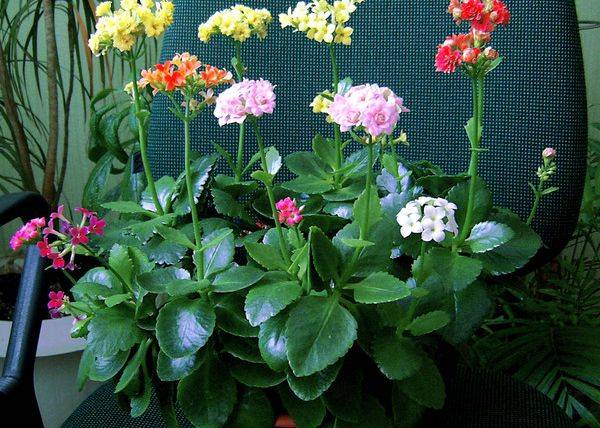

The most common variety is Blossfeld's Kalanchoe. The variety is great for growing at home. The plant blooms with beautiful red flowers. This Kalanchoe can be pruned to the very root. In this state, the flower will begin to develop intensively, its bush will become lush. The species that bloom yellow and white flowers need to be pinched in a different way. True, such varieties are rarely found in homes. They need special care. It is necessary to form such a bush competently. If you remove a lot of foliage, you can cause irreparable damage to the green space. To pinch correctly, it is important to find out what variety you have. However, it is worth remembering that pruning is a necessary procedure and painless for a plant. If decay has begun in the places of the cuts, you need to treat these areas with charcoal. To avoid such troubles, it is imperative to disinfect the trimming tools. In no case tear off excess leaves with your hands, such actions can weaken your green friend.
Kalanchoe flower
Decorative flowering Kalanchoe has dense, fleshy leaves, with beautiful caps of inflorescences of various shades. With proper care, up to 8 months pleases with a beautiful flowering. The leaves are wavy at the edges.
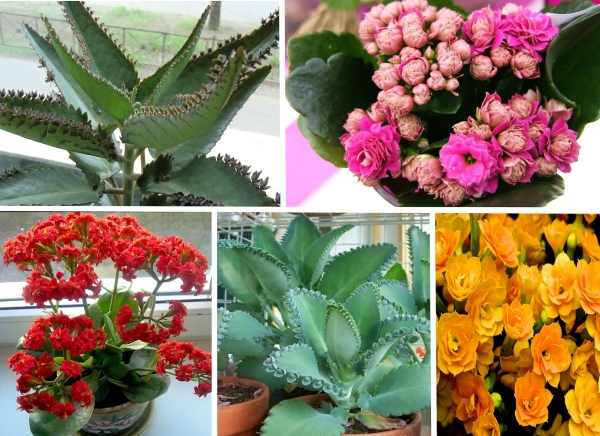

Kalanchoe
tolerates high humidity and dry conditions. In favorable periods, the leaves of the plant accumulate moisture, which is later used for survival.
Blooming Kalanchoe
resistant to various diseases and pests, easily multiplies.
Daylight hours and temperature conditions
The flower loves good lighting, so the northern windowsill is clearly not for him. In summer, it is advisable to take the pot outside or put it on the balcony.
Flower buds in Kalanchoe are laid only in conditions of low temperature and short daylight hours. In the fall, it is good to keep the flowerpot outside until the first frost. Thus, the Kalanchoe will have conditions as close as possible to natural ones.
In winter, the flower pot should be placed by the window pane, where the temperature is usually lower.
For bud formation, the ideal night length should be 12-14 hours. If possible, the Kalanchoe should be placed in a room where the lighting will be natural: the sun shines during the day, and the light does not turn on often in the evening. If this is not possible, the flower can be covered every evening with a dark bag that does not allow light to pass through. Take off the shelter in the morning.
Kalanchoe - home care
Lighting
For normal growth, any place in the house is suitable, where even a little sunlight falls.The plant grows well in partial shade or when exposed to diffused sunlight.
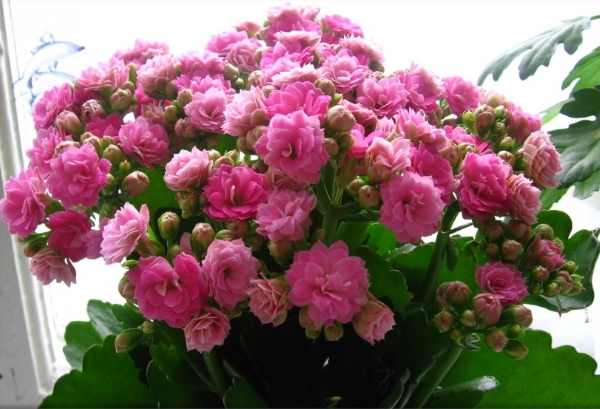

When exposed to direct sunlight, the color of the leaves along the edges will change, they become reddish.
The ideal place in the house would be east or west window
, with not very intense lighting. Blooming Kalanchoe prefers an east or southeast window.
During the flowering of the Kalanchoe in the spring and autumn, additional lighting will be needed.
Not enough light leads to stretching of plants
, the upper leaves turn pale and the lower ones die off.
Back to the table of contents
Temperature
The plant tolerates temperature changes calmly. Therefore, already starting from 10 degrees, it can be taken out into fresh air. In the summer-autumn period, the plant can be left on the balcony.
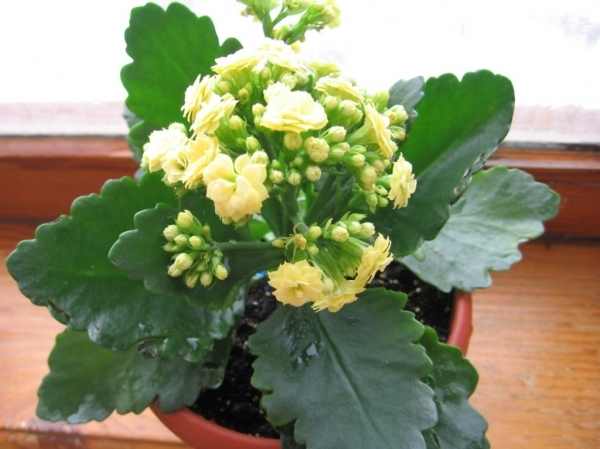

The plant tolerates the heat in the summer months well, but it is necessary to increase the frequency of watering.
The following temperature is considered optimal: in summer 23-25 degrees, in winter 12-16 degrees
.
Watering
Kalanchoe accumulates moisture in the leaves, and tolerates drought or, for example, your absence. Plants are afraid of stagnant water.
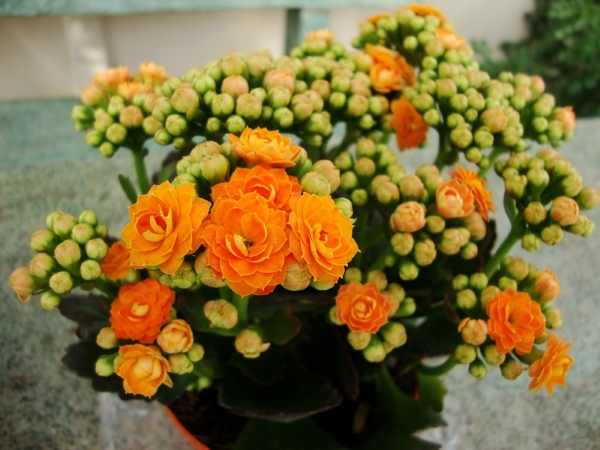

Watering must be done abundantly in order to wet the entire clod of earth, but the remaining moisture must be drained.
For yourself, decide on the correct frequency of watering, the earthen lump should dry out between waterings.
Most often, watering is carried out in the summer heat, in winter the interval between waterings is 10-14 days.
If you pour the plants, the roots will begin to rot, various rot and fungi will appear.
Back to the table of contents
Humidity
At home, Kalanchoe does not need to be sprayed. It is especially dangerous to spray in winter. If the leaves are covered with dust, the best way to get rid of it is to wipe with a damp cloth or, alternatively, wash in the shower.
Pruning
In order for the plants to bloom, it is necessary to cut off radically. Cut the peduncles as low as possible so that the remaining parts do not rot.
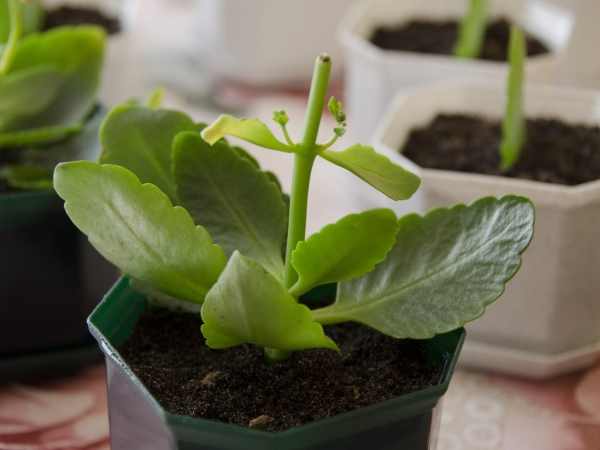

Any bad looking and old parts of the plant must be removed. Young and strong shoots, after pruning, are suitable for reproduction.
In summer, pinch the tops to form lateral shoots and protect the plant from overgrowing.
Video - Pinching decorative Kalanchoe
Top dressing
About 1 time per month, Kalanchoe needs to be fed using fertilizers for succulents.
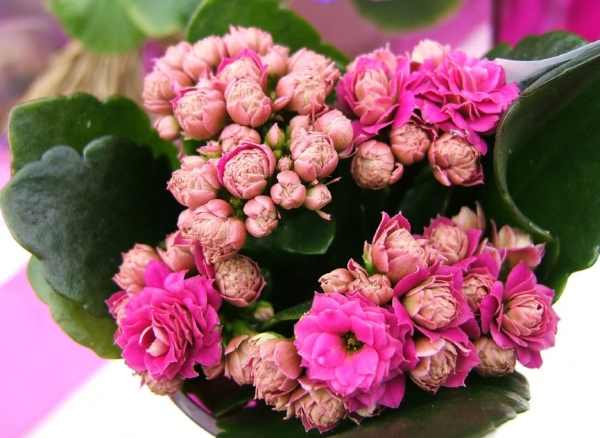

For flowering Kalanchoe, use complex fertilizers
otherwise the plant will not bloom.
Attention:
an excess of fertilizers is dangerous for the Kalanchoe.
It is better to dilute half the dose or a third when carrying out feeding according to the instructions of the drug used. Do not feed in winter.
Back to the table of contents
Reproduction
Kalanchoe belongs to fast-growing plants, therefore it multiplies easily.
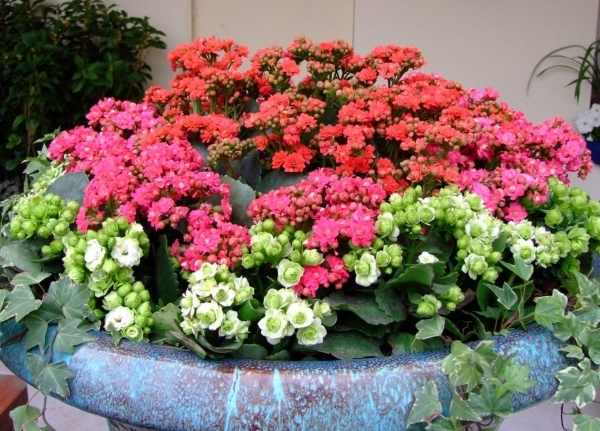

For breeding
suitable young shoots that remain after pruning or cut specifically for reproduction.
Shoots are approximately 10-12 cm long. 4-6 lower leaves are removed on them and planted to such a depth in a pot with loose, fertile soil.
Roots will appear from the sinuses of the torn off lower leaves in the ground. After planting, compact the soil around the shoot and water along the edges of the pot (so that the shoot withers a little in the ground, all other watering should be done as usual, over the entire surface).
There is no need to cover the plant during reproduction. Place the pot in a warm place with partial shade.
Back to the table of contents
Transfer
Plants require annual replanting in late March
... Mature plants can be transplanted
every 3 years
or sprinkle with fertile soil, provided that the roots do not look beyond the boundaries of the pot. You can also transplant after flowering.
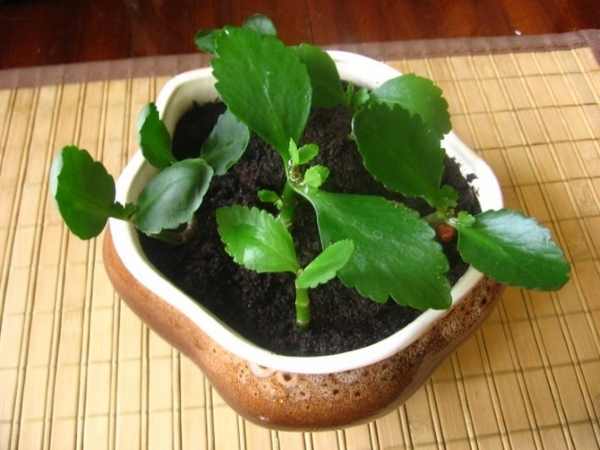

For transplanting, you need to pick up a pot 2-3 cm larger than the previous one in diameter.Remove the flower carefully when replanting to avoid damaging the plant.
Pests
Of the pests, the scale insect, spider mite and mealybug can attack the Kalanchoe.
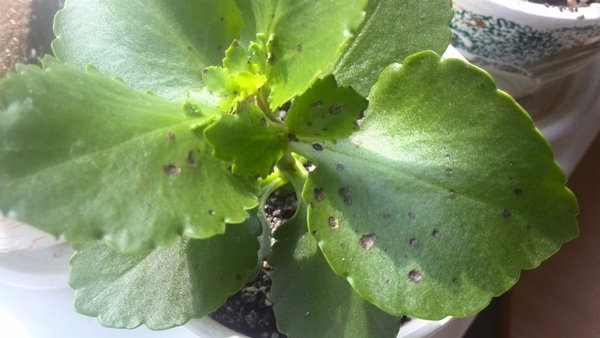

Mealybug
removed with a wet cloth soaked in alcohol.
In the fight against scabbard and tick
insecticide treatment will help. A good remedy is
Fitover
, does not harm humans and pets.
Back to the table of contents
Video - KALANHOE. ALL ABOUT CARE
Growing conditions and care
It must be said right away that modern varieties differ significantly from plants familiar to us from childhood. Remember, the Kalanchoe that grew on the windowsill at my grandmother's was much taller and more sprawling than shop counterparts. He was distinguished by unpretentiousness and tolerance, he did not take much offense to the mistress's forgetfulness in watering and transplanting, and brought a minimum of trouble.
But his flowering was quite modest: small, scattered and quickly falling flowers, buds opening uncommonly. Against their background, the luxurious inflorescences of modern Dutch hybrids simply captivate!
But not many people know that such varieties were bred for street decoration. They were used to decorate flower beds, flowerpots with flowering bushes were displayed on open terraces and balconies, they were used to decorate the entrance to the house and resting places. So, based on the selective characteristics of these hybrids, it is most logical to throw away the Kalanchoe after it has faded, only not everyone will raise a hand for this. In this case, we will independently restore, propagate and grow compact flowering bushes.
Main conditions of detention:
- The soil. Should be loose and nutritious enough. The best option would be the top layer of soil from the forest, but an ordinary garden one with the addition of humus or compost will do, and further care will do without regular fertilization.
- Lighting. Kalanchoe is a tropical plant, which means that so that direct sunlight does not burn it, the light should be intense, but diffused. A similar regime in the conditions of an apartment can be created by placing the pot on the southeast, southwest windowsill or near the south window in a light shade from the curtain. To stimulate flowering, the plant needs to artificially organize a short daylight hours, lasting no more than 8-10 hours.
- Fertilizers. Considering that a compact bush grows for about a year and a half before it requires rejuvenation, it has enough nutrition that is contained in the soil. Additional organic dressings (humate, herbal infusions, peat) are usually applied only during the flowering period. At the same time, it is necessary to strictly limit the supply of nitrogen components, after which a violent growth of greenery may occur instead of flowering, therefore, no selite, ammonia and urea. When buying ready-made nutrient concentrates, choose those that are designed to fertilize cacti or succulents.
- Relaxation. Plants need a dormant period to prepare and gather strength for future flowering. At this time, care consists in limiting watering, changing the intensity of lighting and reducing the air temperature. Usually, it is recommended to rest in late winter - early spring.
- Rejuvenation. You can maintain the decorative effect of the bush by regularly pinching and pruning, while the cut cuttings are rooted in water or wet sand, and then planted in a separate pot, getting a new, young plant. And in order for the remaining stump of the old bush to give new shoots faster, it must be transplanted into new soil and covered with a transparent bag or glass jar.
- Watering. Kalanchoe, like most succulents, does not tolerate high soil moisture, leading to rotting of the roots and even death of the plant, but at the same time, the drying out of the earthen coma can negatively affect flowering. Therefore, it is imperative to make drainage holes in the bottom of the new pot.Special care and caution in watering are needed in winter, and in summer, water only after the topsoil has dried.
Important! To prevent the development of fungal infections and putrefactive processes in the soil, it is enough to put a few charcoal on the bottom of the pot during transplantation, and add wood ash to the soil mixture.
Kalanchoe care after flowering
After all flowers have bloomed, the Kalanchoe must be cut off. Pruning is done to remove peduncles and extra leaves, and to form bushes. Prune in the morning.
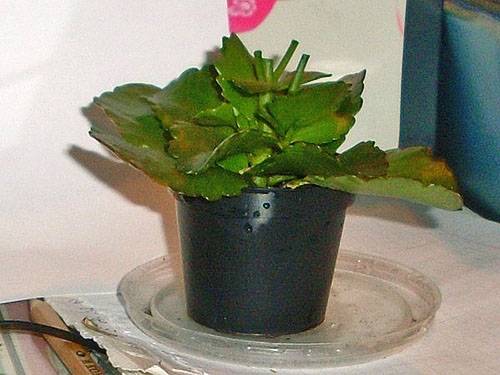

Cut the flower stalks as low as possible so that the plant does not start to rot.
This pruning stimulates the growth of new shoots ready to bloom. Kalanchoe needs rest after pruning, so reduce watering and prevent direct sunlight. Thanks to pruning, the bush will be healthy, it will become lush with a lot of beautiful flower stalks.
Observing the tips for caring for the flowering Kalanchoe, the plant will delight you with flowering throughout the summer-autumn period.
Kalanchoe has faded! What to do with it next? After flowering, the bush should rest and gain strength. If you do not provide him with a dormant period, flowers can not be expected.
Suitable soil and flower transplant
Kalanchoe loves neutral and slightly acidic soil, soft and loose, well-draining water. Florists buy universal soil and mix it with coarse sand. Potting mix for succulents is sold separately. Young bushes are transplanted annually into a wider pot. Adult green inhabitants of the windowsill do not need to be transplanted often, once every 1-2 years is enough.
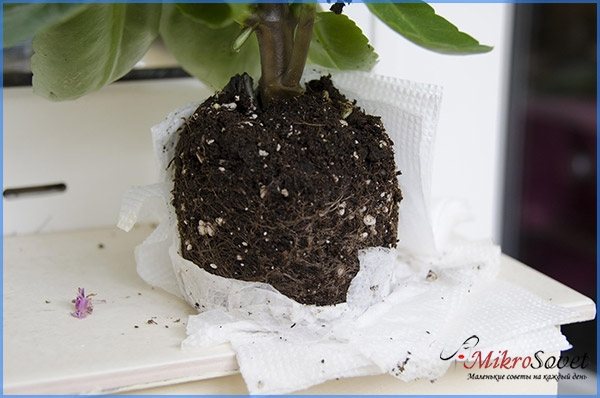

A drainage layer must be laid at the bottom of the flowerpot so that water does not stagnate at the bottom. The plant is transplanted with a moistened old earth ball. New soil is poured, and it should be similar in properties and quality to the previous one. It is sprinkled on the sides of the new pot. The plant takes root quickly within a few weeks.
Plant features
In general, the plant is quite unpretentious, it is not very difficult to care for it, so it is well suited to buy it as a gift. At home, Kalanchoe, as a rule, does not grow more than half a meter in height. You can find out how to care for the Kalanchoe so that it blooms here.
The plant tolerates a short period of drought quite easily., but excessive watering is dangerous for him. When watering, it is worth making sure that the ground is soaked to the full depth, but there should be no excess moisture. It is worth choosing such a frequency of watering so that the soil has time to dry out. In summer, watering should be frequent, in winter - once every two weeks.
In winter, it is important to keep moisture out of the leaves. In this case, in the summer, you need to wipe the leaves in order to clean them of dust and protect them from pests (what are the ways to treat Kalanchoe from diseases and pests?). Once a month, Kalanchoe needs to be fed with a special fertilizer. An excess of fertilizer is detrimental to the plant! Also, the plant needs frequent transplantation (how to properly transplant Kalanchoe?).
Plant temperature and light requirements
Kalanchoe should stand in a well-lit room. In a darkened corner, the flower will stretch, and the flowering stage may not come at all. The best window sills for a green pet are the east and west sides. In winter, the flowerpot can be rearranged to the south side.
In bright sun and heat, the foliage becomes reddish. This is not a sign of illness. At home, the plant is planted in pots and placed on a windowsill or flower stand. In greenhouses and on the balcony, it is better to place the flower in a wide box.
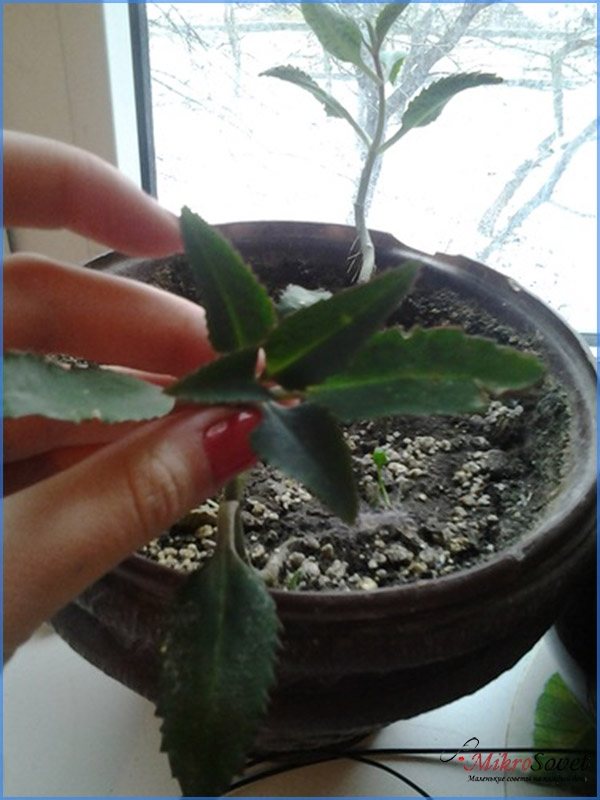

As for the temperature regime, the Kalanchoe loves a moderately warm climate. In the winter months it is ideal for him - + 11-16 ° C, in the summer months - + 23-25 ° C.Of course, the pet can withstand sharp jumps back and forth, but it is better to prevent this.
The main thing is not to allow the soil to dry out or excessive waterlogging. In the summer, the plant is moved from the house to the courtyard or to an unglazed balcony. Some gardeners bury flowers in the open ground, and then transplant the pot back in the fall.
Basic rules for its implementation
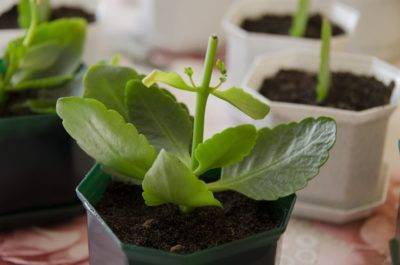

Pruning rules depend on the type of plant:
- Blossfeld's Kalanchoe, a plant that blooms with red flowers, tolerates the pruning process very calmly.
- With other species (most often - with plants that have white and yellow flowers), you need to be extremely careful: if you prune incorrectly or remove too many leaves, it will be fatal for these Kalanchoe species.
If you damage the stem during pruning, you should immediately sprinkle the cut with wood ash.
Watering frequency
Since Kalanchoe is a succulent, it is able to accumulate moisture in its leaves and stem. For this reason, the plant does not tolerate abundant and frequent watering, and stagnant moisture in a pot or pan can be fatal for it.
It is necessary to water the flower only after the earthen coma has completely dried.
After the Kalanchoe has faded, it is recommended to shorten the shoots a little so that the bush starts branching and takes on a beautiful shape. The resulting cuttings can be used for propagation. Flowers that have faded should also be cut off with scissors, because they themselves only dry out, but do not fall off.
youtube-
How and when?
In winter (more precisely, after November), pruning the Kalanchoe is strongly discouraged, since the plant is dormant. You can start in late spring, but at this time the plant can already bloom. You cannot cut off a flowering plant! If the Kalanchoe has bloomed, the procedure must be postponed until the end of flowering (how to care for the flowering Kalanchoe?).
It is better to prune the plant in the morning (before lunch)... After pruning, the plant should be allowed to rest; it is not recommended to water it after the procedure.
There are several types of trimming:
- As soon as the plant has got into your house, you need to pinch to form the crown and set the correct direction of growth. To do this, you need to remove two or three outer leaves on each branch. After that, new shoots will begin to grow.
Until you achieve the desired result, the Kalanchoe should not be allowed to come into contact with direct sunlight. Sunlight will encourage the plant to grow quickly, and therefore the flower may stretch too far. - From this moment on, you need to periodically carry out preventive pruning in order to create a beautiful shape, and this must be done until the desired result is achieved. There is no need to wait for young shoots to grow. You can start pruning (pruning branches) and form the Kalanchoe as soon as new leaves appear.
How to water Kalanchoe
Question: I bought a Kalanchoe, passed it, 4 days have passed, how to water now?
Devi: If Kalanchoe blooms, water a little more often than non-flowering, but the edge is very thin. It is necessary to water so that the ground becomes completely dry on top, inside (if you stick your finger) is also dry to the touch, but not too dry, do not dry it to a state of dust, when the pot is completely weightless. Look at the weather, sometimes the earth dries out quickly (when it's hot, sunny days in summer or very warm in winter), sometimes it dries for a long time, especially in autumn - at the end of August, September. Kalanchoe is a succulent, the leaves are dense, storing moisture, but the leaf mass is large, the need for water is higher than that of cacti or, for example, an agave (aloe), especially during flowering.
Step-by-step instruction
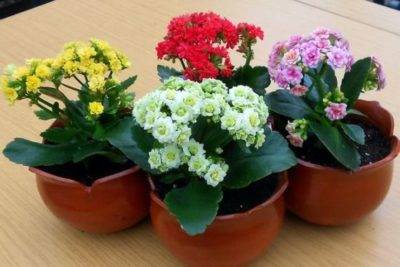

If the plant has overgrown and an ugly and weak top has formed, remove it.- To Kalanchoe grows as a dense "bush", carefully observe the shoots. Remove the top two leaves from them as soon as they start to grow.
- When two shoots appear at the pinching point, allow them to grow until another pair of leaves appears and at this level, cut.
- Wait for another pair of shoots and a third pair of leaves to appear and repeat the procedure. If the bush has not yet acquired a beautiful, round (or other desired) shape, repeat the procedure until the desired result is achieved.
- The last time it is recommended to cut Kalanchoe in late autumn (November), preferably on a window on the south side of the house, or in winter on the east or west side of the house. Do not forget that in winter Kalanchoe should be kept in a cool place (10-15 degrees).
Secrets and recommendations of florists
Agree, advice from experienced florists can be a good help to many rules and requirements. Sometimes great results are achieved by trial and error, so it is worth listening to proven recommendations and including them in care.
- Council number 1. In May, when the Kalanchoe bush has already bloomed, I cut off all the cuttings, stick each of them into separate pots with ordinary garden soil and cover with transparent jars. Most of the petioles root quickly and soon young leaves appear on them. By the fall, you will already have lush bushes that will bloom by November. And in April they will bloom a second time, then repeat everything from the beginning - cut the cuttings, plant, and discard the old one.
- Council number 2. Reducing daylight hours is not so difficult. Just in October or March, around 5 pm, cover the color with the pot with an opaque cap (a dark bucket, box or even a saucepan), and in the morning at 7 pm, be sure to remove the shelter. Such care with blackouts will lead to the appearance of flower buds in a month.
- Council number 3. You can rejuvenate the plant without rooting. First, after flowering, all wilted peduncles are cut off. When you notice that the shoots have started to grow, pinch, and a little later, break off the ones growing from this place after the third pair of leaves, and so on, until a branchy but dense bush is formed. The last pinching is done in October, as further stimulation of the flower buds is carried out.
- Council number 4. Different varieties of Kalanchoe look amazingly beautiful and original when they are planted in one pot - the inflorescences form a bright, variegated, multi-colored cap.
How to do it after flowering?
Pruning Kalanchoe after flowering is also called peeling pruning. Make sure that the plant has completely finished blooming before making a cleansing pruning.
- Leaves in this case are cut in the same way as in preventive pruning: two or three extreme leaves on the stems.
- After that, remove the blooming buds (peduncles). The buds are removed at the very base. It is necessary to remove every single peduncle so that the plant does not start to rot.
Initial and prophylactic image
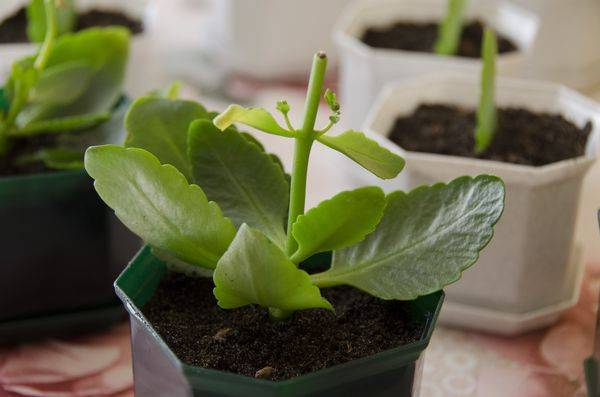

The initial pruning is that as soon as the plant has taken root after transplanting, it is immediately pinched. How to pinch the Kalanchoe correctly - more on that below. On the shoots, you need to cut off the two upper leaves in turn. In the place where the pruning took place, young shoots with leaves will grow. Now prophylactic pruning is carried out. It is repeated from time to time until the Kalanchoe looks like a pretty and neat bush. Don't wait for the leaves to grow. Young people have just appeared - you can already carry out the procedure.
In late autumn, when winter is just around the corner, flower cutting is stopped. It is possible to form a bush again in late spring. But if the flower begins to bloom, pruning is prohibited.
Before you start diving, determine the type of Kalanchoe, as each species is cut differently. If the flower is overgrown, remove the top without any remorse. To get a dense bush as a result, watch the growth of the shoots.As soon as a young shoot appears, pinch off two leaves - in this place, over time, you will see two shoots.
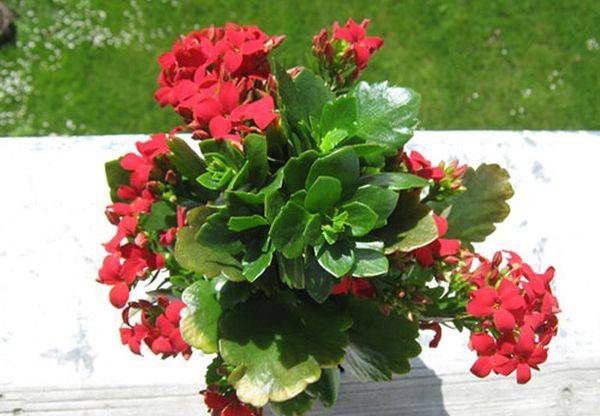

Let them grow until the third leaves appear, and make a pick at this level. Next, let the next pair grow to the third leaf, and pinch again. And so on until you get a beautiful spherical bush.
How to take care in the future?
At the end of pruning, the plant must be allowed to rest.... At this time, it is necessary to reduce watering and remove the plant away from direct sunlight, that is, do not keep it on the window in the sunniest time of the day; a table near the window is much better suited, especially if the window is curtained with transparent tulle. The time it takes for the plant to fully recover after the pruning procedure is about a month (from 20 to 40 days).
So, if you follow all the rules (it is also advisable to consult with more experienced growers), you can grow a beautiful flower in your home and provide it with comfortable conditions for further reproduction.
dacha.expert
Kalanchoe land
Question: Which land is better for Kalanchoe?
Agava: I have absolutely all Kalanchoe planted in the same commercial land with coconut sponge (fibers) and foam, all on the balcony in "lace" shade. At the same time, tubiflora, fedchenko, laciniata grow as if undermined. Blossfeld, Tomentosa "Panda" and Fang - slowly. And the little tomentosa "Chocolate" is half-alive. If you have one with a jagged edge and a lot of children along the edge, then it is very unpretentious, it grows almost in clay.
Devi: I have a traditional succulent soil recipe: 3 parts Terra Vita universal soil (green bag) + 1 part coconut substrate (from briquettes) + 1 part zeolite pellets. Excellent composition, porous, dries quickly.
Bloom
When and how often does Kalanchoe bloom at home?
Kalanchoe one of the most ornamental plants, which is valued primarily for its long flowering, bright large caps of flowers of a wide variety of colors and shades.
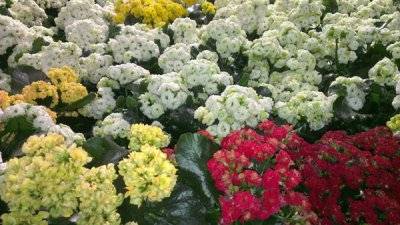

When does Kalanchoe bloom? Compact bushes kalanchoe often pleasing to the eye when a blizzard sweeps outside the window. And therefore the period flowering Kalanchoe can be called winter.
Flowering period: Kalanchoe in bloom maybe already at the end of January, but sometimes it happens that they do not bloom, hold on for a long time, then the plant throws them off by the beginning of March.
And after a while, it gains new ones, which bloom by the end of the month. Flowering continues throughout the spring.
But some varieties, mostly artificially bred, can bloom from March to the end of September with the right content.
That is why, when asked how many times a year and when Kalanchoe blooms it is impossible to answer.
Features and problems
Rarely can anyone remain indifferent, passing by a flower shop with Kalanchoe bushes on display. The lush caps of the inflorescences amaze with their magnificence and variety of colors - milky white, foamy pink, crimson, orange, bright red ... Of course, it is impossible to resist not to buy this living joy! But, I think, many are already familiar with the situation when, after a violent and prolonged flowering, the bush begins to lose its decorative effect and attractiveness.
First, the inflorescences fade, then thin twigs stretch out, the leaves become smaller, the stem becomes bare and stiff. In this form, the plant can hardly be called a window sill decoration. What to do? In such a situation, some simply throw away the faded specimen and forget about it.
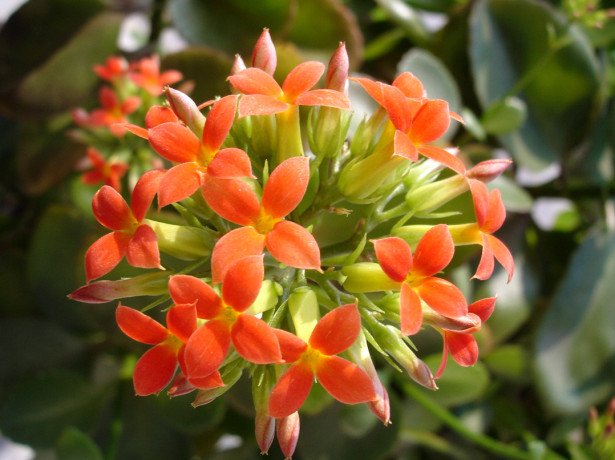

Lush caps of inflorescences amaze with their magnificence and variety of colors
Others intensify the care and rush to save the bush with all their might: they intensively fertilize, transplant it into a new pot, put it closer to the sun or vice versa, put it in the shade. But, as a rule, all these activities do not bring visible results.
How to make it bloom?
Basic rules on how to care for the Kalanchoe so that it blooms. Observing these conditions, you will certainly achieve flowering:
- if Kalanchoe does not bloom, then the reason may be the absence of bright diffused light. If it's cloudy outside, your pet can be provided with an electric day with a lamp;
- how to achieve flowering Kalanchoe? To do this, it is necessary to maintain an optimal temperature: not lower than 10 degrees and not higher than 25.
The plant is not afraid of such drops, but it is not worth putting Kalanchoe near heating devices, heat flows are harmful to the flower; 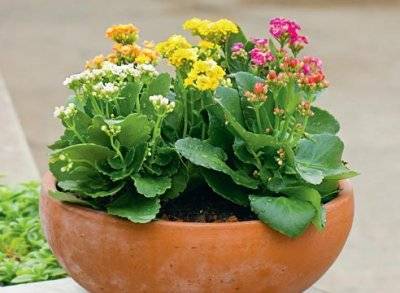

watering with soft water. Don't water very often.
Look, if the ground is completely dry, pour in a little water so that it covers the ground and absorbs very quickly, you do not need to spray;- wilted parts of the plant should be removed, as they will take away strength from new buds, and their time flowering may decrease markedly;
- flower loves transplant once every two years in fresh soil, you can use the usual soil for succulents or simply mix the turf soil with sand and peat;
- Kalanchoe does not need special feeding, any liquid fertilizer for flowering is suitable;
- if Kalanchoe does not bloom for a long time, then you need to remember about the personal hygiene of the flower, regularly wipe the leaves with a damp cloth;
- dormant period, consisting in the creation of artificial short daylight hours and long, up to 14 o'clock at night, from August to September, plays a major role.
Those who leave complain that the Kalanchoe no longer blooms. Actually flowering can be provoked.
Watering the flower correctly
Don't worry about watering the Kalanchoe. It can withstand drought very well. Of course, in the hot season, you should not overdry the land lump too much. During the winter months, the frequency of watering is reduced to once every few weeks. Stagnant water in the soil often causes root rot.
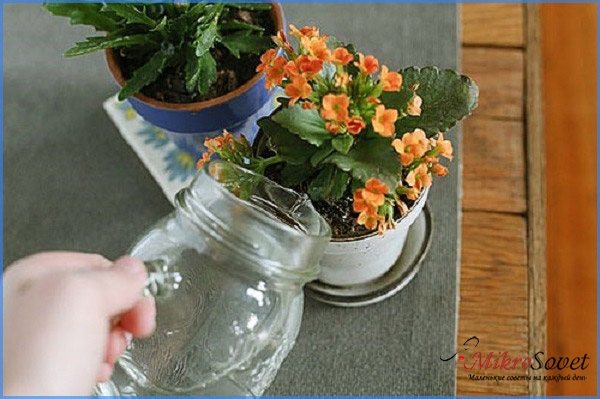

It is very important that the pot with the plant has drainage holes at the bottom through which excess liquid will flow out. You need to water the plant both in the pallet and on top of the soil. In extreme heat, you should monitor the soil. The dried top layer is watered immediately.
Photo
Kalanchoe blooming:
Blooming Kalanchoe care: pruning after flowering
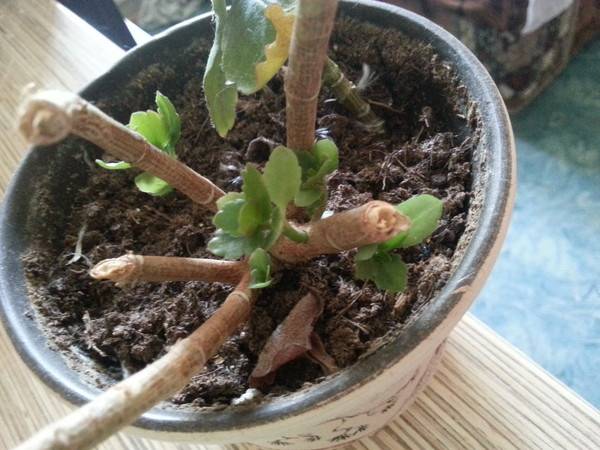

Daylight hours and temperature conditions
The flower loves good lighting, so the northern windowsill is clearly not for him. In summer, it is advisable to take the pot outside or put it on the balcony.
Flower buds in Kalanchoe are laid only in conditions of low temperature and short daylight hours. In the fall, it is good to keep the flowerpot outside until the first frost. Thus, the Kalanchoe will have conditions as close as possible to natural ones.
In winter, the flower pot should be placed by the window pane, where the temperature is usually lower.
For bud formation, the ideal night length should be 12-14 hours. If possible, the Kalanchoe should be placed in a room where the lighting will be natural: the sun is shining during the day, and the light is not often turned on in the evening. If this is not possible, the flower can be covered every evening with a dark bag that does not allow light to pass through. Remove the shelter in the morning.
Why doesn't it bloom?
What to do, if Kalanchoe decorative stopped blooming at home?
- if a Kalanchoe blooming does not bloom, but grows upwards, then you need to radically cut off, remove all the upper leaves so that the plant goes in breadth, be sure to cut off the shoots on the leaves if roots begin to appear;
- so that blooming Kalanchoe you can provide him with a minimum temperature during the rest period along with a short daylight hours;
- it is worth trying to rearrange the plant on a window overlooking the other side of the horizon, but not to the north;
- what to do to bloomed Kalanchoe? It is closed with a cap made of dark thick paper and left for 20 - 21 days without water.
After the sunlight is returned to him, it is worth feeding with fertilizer; - how to make bloom Kalanchoe at home and in winter? To do this, you need to organize for him a short daylight hours, lasting 8 hours.
After a month of living in this mode, Kalanchoe begins to bloom.
But flowering Kalanchoe at home, throughout the year, it is mainly characteristic of young plants blooming for the first year.
How to transplant Kalanchoe
Question: How to transplant the Kalanchoe correctly, is it possible to transplant the flowering Kalanchoe?
Natali: When you buy a flowering Kalanchoe, it can only be transplanted by the transshipment method. Water the Kalanchoe and squeeze the pot so that the earth falls away from the walls of the pot. Take a new pot and if you enlarge the holes in the bottom of the pot. For example, if you have three holes, make 6 or 8 with a hot knife. If the holes are large, place a circle of mosquito net on the bottom, then drain 2 cm of foam, wine cork or expanded clay. Remove the plant from the pot and plant the Kalanchoe in a new pot. Now fill the voids with fresh earth. Try not to tamp the ground, but to tap the pot. When it is completely filled with earth, place the Kalanchoe on the windowsill. Shade for the first two days during the hours when the direct sun is shining. Do not water for 3-4 days! Then watering as usual.
Kalanchoe faded
What to do after flowering? Kalanchoe care after flowering:
- if a the flower is already "tired", you need to cut off old wilted leaves;
- flowers with peduncles, put it in a cold place;
- when new shoots appear, it is best to pinch them, at the level of no more than three rows of leaves from the root, otherwise the plant will look "disheveled", and this should be done until about the end of November.
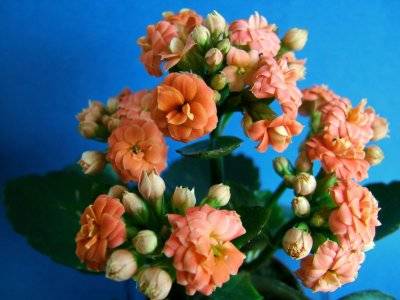

Kalanchoe after flowering needs updating. It is very simple to do this - by cuttings in the spring.
And already on new, very young plants, buds will appear, which will quickly become flowers than old ones.
What to do with faded Kalanchoe flowers is to cut off and let the plant dry out.Kalanchoe is not the most capricious flower... With proper care, a novice florist can cope with it, and he will answer you delightful long flowering and will decorate your home.
selo.
Why crop
Pruning a homemade Kalanchoe is the removal of excess leaves and flowers. This procedure will help shape the plant to look beautiful. A small bush looks more original than a long stem.
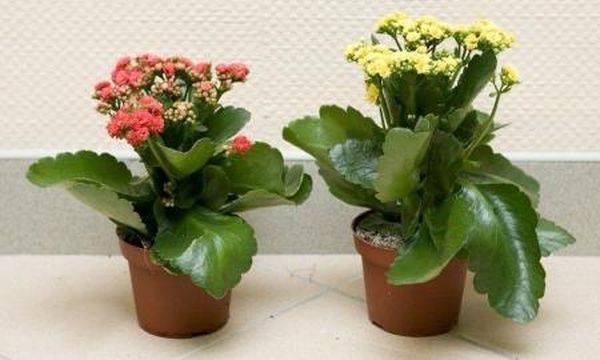

In addition to the decorative purpose, pruning is also needed for lush flowering. When we remove the extra shoots, sap accumulates in the stem, which is then evenly distributed over the remaining branches. Kalanchoe becomes juicy, the plant's resistance to drying increases.
Note that there are three types of pinching:
- initial;
- preventive;
- after flowering.
You will learn how and when each type of pinching is done. Sometimes, especially in sunny places, the flower can outgrow. Therefore, many gardeners are interested in how to cut the Kalanchoe, if it is stretched out. If it so happens that a long, ugly tip has grown, you just need to cut it off. Try to constantly observe the escapes. As soon as they begin to grow, you need to immediately pinch off two leaves on top of them. Of course, the green inhabitant of your house can do without pruning, only then it will look ugly, and old shoots will interfere with the development of young shoots.
Why does Kalanchoe start growing up and stop blooming?
There are several reasons, due to which the plant does not give flowers. The main ones are:
- Ignorance of the owner of the flower of the technology of growing the plant. After all, in the store, the seller said that this potted crop did not need special care.
- There is a lack of lighting for flowering. As a result, the shoots begin to stretch, they simply do not have enough strength to begin to form inflorescences.
- Very often, when we come to the store, we see flowering bushes. It seems to us that this culture is constantly blooming.But this impression is deceiving. To get this look, flower suppliers, before sending them to the store, achieve the appearance of the buds, ordinary forcing.
- A small plant with a small root system is planted in a transportable pot. The soil in it contains special fertilizers that last only two months. Such a Kalanchoe is kept for several days in a short daylight hours, usually 10 hours. Bushes begin to lay flower buds.
- When such a plant turns out to be in good home conditions, where normal lighting and temperature are created for it, it continues to bloom, thanks to the nutrients remaining in the pot.
To see a blooming bush again, you need to help the plant, it should gain strength and begin to bloom in good home conditions.
Kalanchoe flowering period
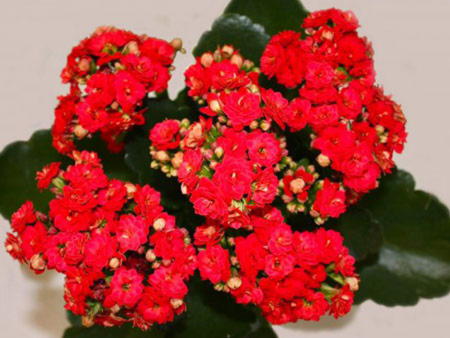

Kalanchoe blooms no more than once a year. As a rule, the first buds appear at the end of winter and disappear in the first half of spring. Perhaps the buds will begin to form in March, in which case flowering will last until the end of spring.
If the buds do not appear, it is necessary to check the plant for the presence of mold, fungi or parasites.
If you follow all the recommendations for caring for the Kalanchoe, you can achieve the second flowering of the plant in summer.
Kalanchoe species
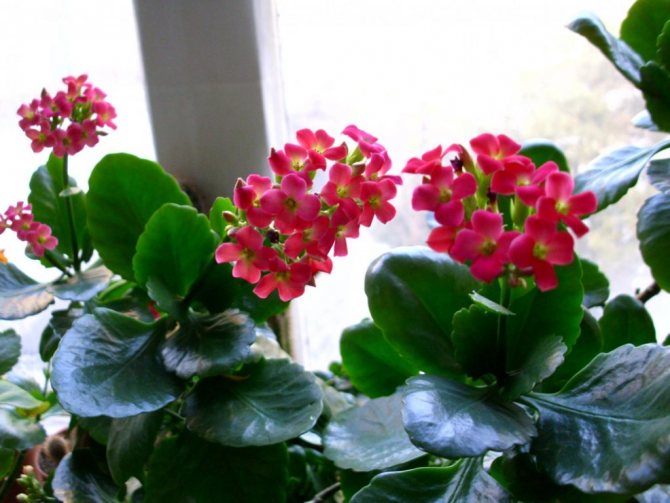

It is easier to understand what kind of care a flower needs, knowing where its homeland is. There are more than 200 species of Kalanchoe in nature. It grows in India, Australia, southeast Asia, Madagascar, tropical regions of Africa and America, and the islands of New Guinea. According to legend, its leaves were saved from a fever by a Russian sailor left by his comrades on the shore. He chewed the shoots and recovered, after which he named the plant "Kalanch", which means "health" in the language of the local tribe. Travelers brought the flower to Europe, and they gladly began to plant it as a houseplant.
The following types of Kalanchoe are most common in flower shops.
- Rosalina mix. It is distinguished by its small size and vigorous flowering, lasting up to 10 weeks.
- Blossfeld. The plant has dark green leaves with a reddish border. Mostly flowering occurs in early spring.
- Flaming. Kalanchoe got its name from the orange-red flowers collected in umbrella inflorescences.
- Terry. The oval leaves of this plant are slightly fleecy to the touch, and its flowers are bright pink.
- Bryophyllum. The flower with fleshy multi-colored leaves in a speck blooms with dull inflorescences in the form of a panicle. However, its unusual color leaves are very elegant in themselves.
- Don Sergio. This hybrid variety has no medicinal properties, but can bloom for up to six months. Kalanchoe Don Sergio requires the same care as other species.
Frequently asked Questions
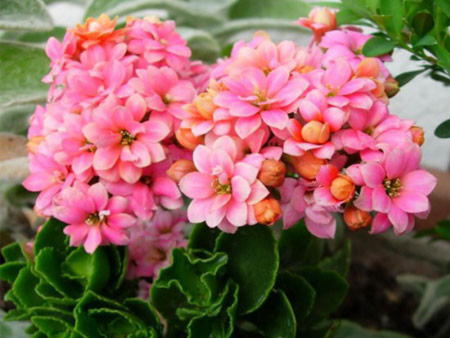

1. Why doesn't Kalanchoe bloom? As a rule, the reason for the absence of buds and inflorescences on a plant is an excess of fertilizer in the soil.
Solution to the problem
It is necessary to gradually reduce the amount of fertilizer. The main thing is not to stop feeding Kalanchoe abruptly. Reduce the amount of fertilizer each time.
2. Kalanchoe blooming - what are the medicinal properties? The plant has a fairly broad spectrum of action on the human body.
- Kalanchoe has anti-inflammatory, bactericidal and hemostatic effect.
- In addition, the plant can be used for the early healing of wounds.
- The sap of the plant is effective for diseases such as ulcers, boils, erosion of the cervix, burns, purulent wounds.
- With the help of the plant, you can get rid of acne and blemishes on the skin of the face.
- Kalanchoe is a part of many drugs for improving vision.
Note: if you grow a plant in a dark place, Kalanchoe accumulates a large amount of useful and healing substances.
3. How long does Kalanchoe bloom? As a rule, the flowering period of a plant does not exceed one month, however, if you want to extend this time, you must:
- Provide a large amount of bright, diffused light, lamps can be used;
- After a nine-hour stay of the plant in the light, put the flowerpot in a dark place;
- Fertilizers should be applied no more than once every two weeks;
- Be sure to trim the stems after flowering.
At the end of the flowering period, watering should be reduced and top dressing should be excluded. This is due to the fact that in the homeland of the Kalanchoe, the period of flowering is replaced by a period of drought.
Reproduction of flowering Kalanchoe
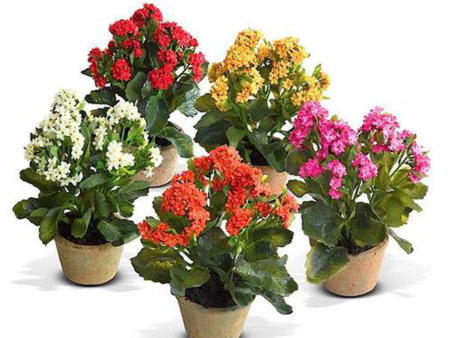

It is possible to start reproduction of the plant, provided that the length of daylight hours is at least 12 hours. Otherwise, an additional light source will be required.
1. Reproduction of Kalanchoe in a vegetative way. In this case, a leaf cutting or stem cutting is used for plant propagation.
Prerequisites for rooting:
- The air temperature during the day is not higher than 24 degrees, at night - not lower than 18 degrees;
- Bright lighting, but not direct sunlight.
Only healthy and undamaged plant material should be planted. If you are using a leaf cutting, it should be carefully separated from the stem in the area of attachment. In the case of a stem cut, a two-leafed shoot is used.
2. Reproduction by seeds.
The seeds of the plant are very small, they are sown on the surface of well-moistened soil with an acidity of 6.0 to 6.5 pH. The earthen mixture must be sterilized and have the following composition:
- peat (one part);
- sand or vermiculite (one part).
You do not need to cover the seeds with soil; flower growers recommend simply pressing them into the ground. After planting on a flowerpot, you must put on a plastic bag and within ten days the seeds should germinate.
The necessary conditions:
- Diffused sunlight;
- The air temperature is not lower than 21 degrees;
- Daily airing.
It is necessary to remove the polyethylene immediately after the sprouts appear. Do not forget to feed the young plant, but carefully, and also pinch the shoots to form a beautiful bush.
How to achieve flowering Kalanchoe in good conditions?
When the inflorescences completely wither, the entire summer period, Kalanchoe needs feedingIt should be done twice a month, using ready-made mixtures used for feeding succulents.
- After 30 days, after flowering is complete, the plant must be cut off;
- If these are young bushes, the strongest points of growth are pinched;
- In an adult plant, lignified shoots are cut, achieving the desired crown height.
As a result, the Kalanchoe will not stretch. Before flowering, the number of shoots will increase, the tops of which will be decorated with emerging buds. They begin to form only when the duration of daylight begins to decrease. For the middle lane, this period begins in October and lasts until the middle of March.
For a plant during this period you need to create a comfortable temperature:
- Night 20 ° C
- Day 27 ° C
Moreover, if at night the temperature is above 20 degrees, there will be a delay in the appearance of buds.
Kalanchoe does not like drafts very much, is afraid of the cold. For this reason, the plant should not be placed close to heating devices, as well as near doors leading to a balcony, or next to a window.
Features of feeding
Every florist wants to achieve lush and beautiful flowering. In order for the Kalanchoe to delight you with bright flowers, it is necessary to feed the plant in a timely manner.
You need to fertilize the flower monthly. It is recommended to use fertilizers designed for succulents. But ordinary, complex additives have a positive effect on abundant flowering.
The flower should be fed carefully, because the excess of micronutrients contributes to the abundant growth of stems and leaves. In this case, all the plant's strength is spent on growth, and the flowering period may never come. Experienced florists recommend making only half of the norm indicated on the package.
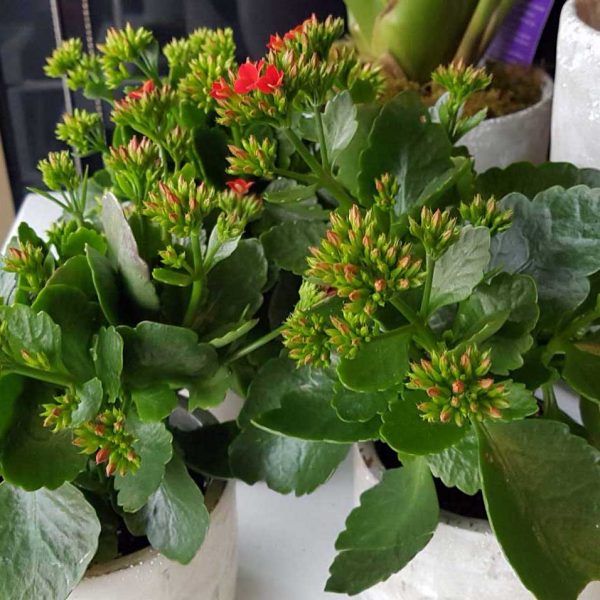

What should be the lighting of Kalanchoe
To achieve flowering of a house plant, it is very important to create appropriate lighting for the Kalanchoe.
When the plant is dormant, from March to September, morning and afternoon, should be the most intense lighting... In the hottest midday, so that the plant does not get burned, it must be placed in the shade.
In autumn and winter, natural light is always insufficient, so there is no need to do additional shading. If the street is cloudy or the Kalanchoe is on the north side, you need to mount additional lighting.
Sufficient light level can be determined by the state of the leaves of the plant and its shoots:
- If the light output is sufficient, the leaves appear healthy and brightly colored.
- With insufficient light, the leaves begin to fade. New stems that appear become smaller. Old shoots begin to stretch out. The plant does not bloom, even a long daylight does not help.
- With a lot of light and heat, the leaves get burned. This can be identified by dry, whitish spots. Strong lighting stops the growth of the shoots.
- In order for the Kalanchoe to begin to bloom at home, it is necessary to reduce the daylight hours to 8 hours.
- With longer light, in autumn and winter, the buds will not form. Affects the process and artificial lighting. That is why, in order to make the Kalanchoe bloom, you need to cover the plant with a cap from the evening until morning. You can put the plant in a closet or other dark place.
Plant varieties affect bud formation. With the limitation of light, the plant needs a maximum of 24 daysto start a new kidney.
Subject to all the rules, at the very beginning of winter, the flowering of the plant will begin and will delight the eye for 11 weeks.
If you take care of the plant and maintain the technology described above, you can achieve constant flowering of the Kalanchoe. It will constantly grow and please the eye.
Kalanchoe as an indoor flower has become widespread thanks to the cultivated varieties with large and double flowers... Blooming Kalanchoe looks spectacular and bright, lush inflorescences, like a colored hat, rise above the fleshy dark green leaves. These varieties appear on sale under the general name Kalanchoe Kalandiva or Hybrid Kalanchoe, their flowers can be of different shapes and colors - white, pink, purple, red, yellow, etc.
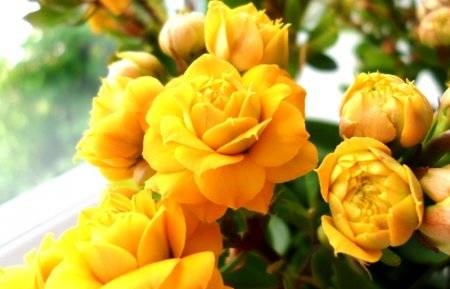

Sellers of potted flowers assure that Kalanchoe does not require special care and blooms for a long time, buyers trust specialists and willingly buy potted flowers for home decoration or as a gift. However, the owners of the Kalanchoe experience disappointment after a while. Kalanchoe can indeed bloom for a month or two, but after the inflorescences wither, new flowering does not occur either in six months or in a year. During this waiting period, the beautiful shape of the Kalanchoe bush is lost, the shoots are stretched, the lower part is exposed, large leaves fall off, and only small leaves remain on the tops of the shoots. The overgrown Kalanchoe does not look nice and neat.
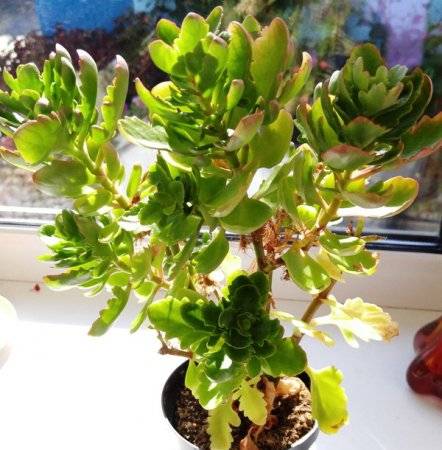

Having experienced a sad experience, flower growers began to consider Kalanchoe as a disposable flower and after flowering this potted plant is usually thrown away.
Why does Kalanchoe not bloom at home? What do you need to do to see a beautiful bloom again? How to return the compact correct shape to the Kalanchoe bush? I will try to answer all these questions in detail.
How to return the beautiful Kalanchoe shape:
You should not throw out the Kalanchoe after flowering, but you also do not need to keep an elongated and out of shape plant on the windowsill, in the hope that it will change or lush leaves will grow on the bare branches. It is necessary to cut off the tops of elongated shoots and root. Kalanchoe cuttings quickly give roots in water, in sand or in the ground.A potted plant will be lush and bloom profusely if several cuttings are planted in one pot, at a distance of 4-5 cm from each other.
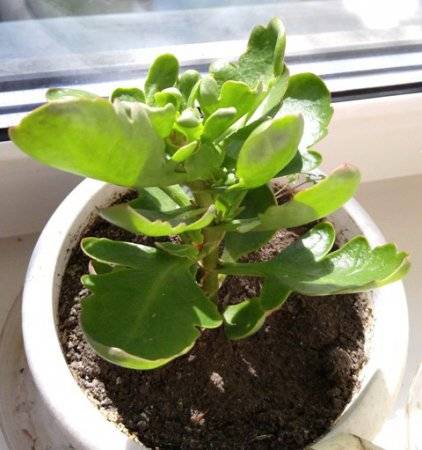

Provide good lighting when new bushes are growing. Kalanchoe is a sun-loving flower, with a lack of lighting in the back of the room or on the northern windowsill, the shoots of the plant will stretch out, the bush quickly loses its compact shape.
During the period of Kalanchoe growth, it is useful to fertilize once every 2-3 weeks with a complex fertilizer, diluting it twice as weak... To stimulate branching, the main shoot of the Kalanchoe can be pinched at a height of 10-15 cm, the tops of the branches that have appeared cannot be pinched, since inflorescences will form at the points of growth.
How to make Kalanchoe bloom:
After the new Kalanchoe bushes become lush, we begin to stimulate their flowering.
Kalanchoe is a plant of a short day, so that flowering begins, a special light regime of a short daylight hours with a duration of no more than 8-10 hours a day is created for it during a month. The rest of the time, the Kalanchoe should be in complete darkness, in a closet or under a dense cardboard box.
The natural period of reduced daylight hours occurs in winter, so many Kalanchoe flowers begin to bloom in spring, without any effort. However, artificial lighting from lamps that we turn on in the morning and evening can confuse the plant.
Blooming Kalanchoe is sold in stores all year round; it may seem that this plant blooms at any time of the year. Really really Kalanchoe can be made to bloom in any month. Flower growers use this property of Kalanchoe, they root the cuttings, plant them in a substrate with the addition of fertilizers that will feed the plant for a couple of months. Then the Kalanchoe is kept under a special light regime, with a duration of illumination per day no more than 8-10 hours from 2 to 5 weeks, depending on the species and variety. Short daylight hours force the plants to form flower buds. After moving the Kalanchoe for a full daylight hours of 12-14 hours, inflorescences with buds are formed at the ends of the shoots, flowering soon begins.
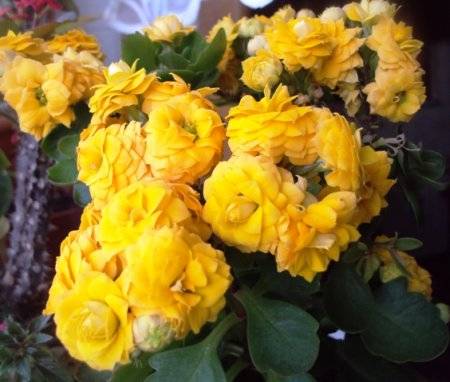

With good lighting, nutrition, moderate watering, a favorable temperature, the Kalanchoe will bloom, giving all its strength, but when the supply of nutrients in the substrate runs out, the flowering fades. To prolong flowering, Kalanchoe is fed with fertilizer for flowering plants, withered flowers and peduncles are promptly removed.
Watering Kalanchoe is carried out abundantly, but not often. Water the flower after the top layer of soil in the pot has dried. In constantly moist soil, the roots of the plant are susceptible to decay.
For planting seaweed, you can use succulent soil or take a neutral versatile substrate and add more sand.
Kalanchoe loves moderate heat all year round from +22 to +26 degrees. With a sharp fluctuation in temperature during the day and at night, the flowering of the Kalanchoe may be delayed, and the plant also does not like drafts, placement on a cold windowsill or proximity to heating devices.
We pinch everything!
Well, do you think that all the dancing is over? But you didn’t guess! Now your faithful Kalanchoe will try to deceive you again. He will build up shoots. Strenuous and diligent. To turn into that hated scarecrow with long branches.
What to do? Tweak! Mercilessly and without pity. Not missing a single escape. We are waiting for the appearance of three leaves, and we tear off the rudiment of the fourth along with a piece of the cutting. We continue this haircut until the end of February. At this point, you will have a neat round and dense bush, and not a line that and a bow on the side.
Pruning
Many indoor plants need pruning. Should this procedure be carried out during flowering? Florists do not recommend making any manipulations during this period. The only indication is that the plant is damaged by disease or pests.In this case, it is necessary to remove all affected areas.
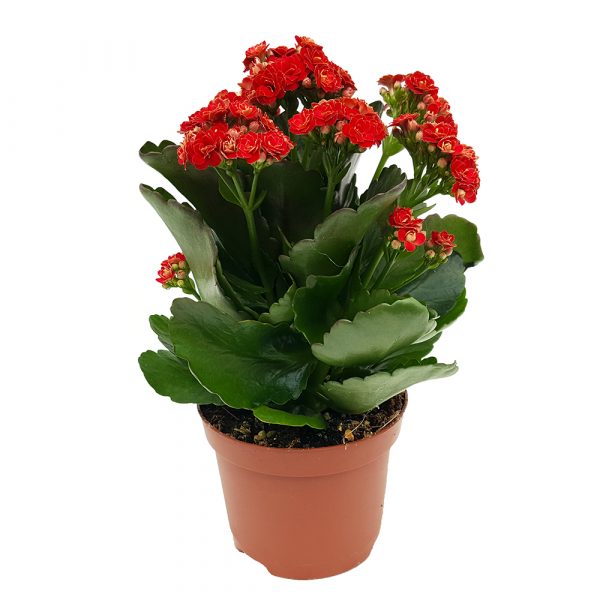

The flowering period is reflected in the general condition of the plant. It weakens. Therefore, for the normal growth of the Kalanchoe, he needs to arrange periods of rest. To do this, you need to perform the following activities:
- cut off all peduncles;
- the flower is rearranged in a cool dark place;
- watering is stopped for 1.5 months.
Having provided a normal rest period for the plant, it is returned to its usual place. The soil must be fed.
Pest and disease control
The small white discharge found on the leaves is most likely due to a mealybug infection of the plant. It feeds on Kalanchoe sap and quickly attacks the flower. All stains should be carefully removed, and then the leaves should be sprayed with mineral oil. The most affected shoots and leaf areas are best removed.
In summer, ticks and aphids fly into the room through an open window and take root on the leaves of the Kalanchoe. Mites thrive in warm and dry conditions on the back of the leaf, while aphids thrive in generously fertilized soil.
When water stagnates in the ground or excessive groundbait, brown bloom and spots may appear on the leaves. They demonstrate improper care that should be changed immediately. The plant needs to be transplanted into looser soil with good drainage. The spoiled leaves must be removed, as well as parts of the roots rotted from excess moisture. Having corrected the mistakes made, no additional measures are required. The plant will quickly bounce back.
An unpleasant problem for all indoor plants is created by powdery mildew when Kalanchoe leaves are affected. It arises from too warm and dry air and can spread to other flowers standing next to the patient. Spraying the plant with fungicides and rearranging it to a cooler place, it is easy to defeat the disease.
If the Kalanchoe is frozen, brown spots will appear on its stem and the plant will dry out. It is very important to observe the correct temperature regime and not to overcool or overdry it.
When Kalanchoe fades: care features
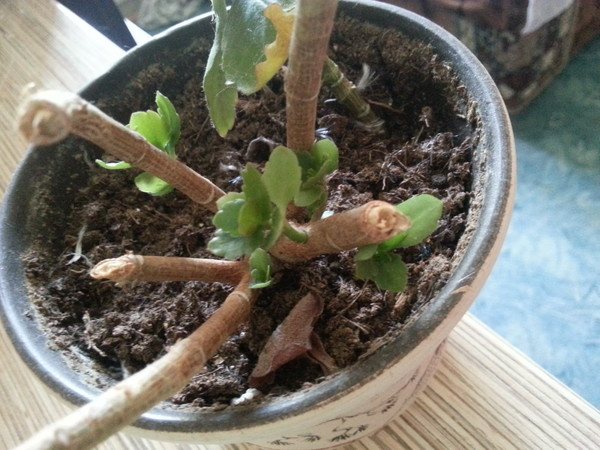

After the end of flowering, it is recommended to cut off all peduncles "at the root". Elongated shoots also need to be shortened, if necessary, cutting them by 10 cm.Above the third leaf, periodic pinching of all branches, including the side ones, is carried out. As a result, the bush is uniform and lush.
Also, after flowering and pruning, it is necessary to organize a dormant period for the bush, which lasts one and a half to two months. For this, the Kalanchoe is placed on the northern windowsill, is not fed and watered very poorly. In such conditions, the plant will slow down in growth, as a result of which the shoots will not stretch, and the flower itself will have time to accumulate strength for future budding.
Kalanchoe
- a bright representative of the Tolstyanka family, it can be both decorative (Blossfeld) and medicinal (Degremona).
Blooming Kalanchoe
unpretentious in care and rare beauty.
Let's consider in more detail: caring for a blooming Kalanchoe at home, transplanting, reproduction, proper watering and feeding for abundant flowering. Kalanchoe care after flowering.
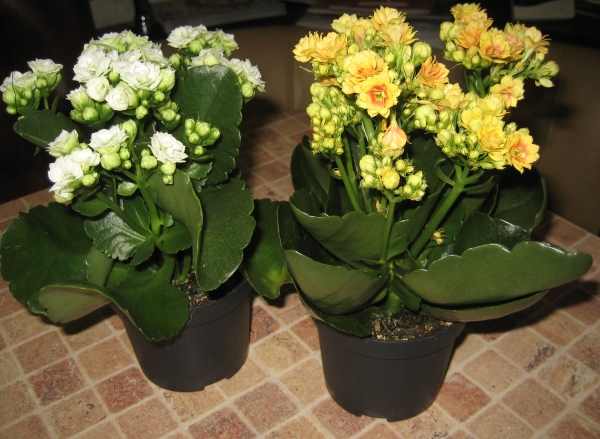

Kalanchoe transplant
If necessary, in the summer, the plant can be transplanted. This is necessary when the pot becomes small. The signal is an earthen lump entwined with roots.
For Kalanchoe, it is better to select ceramic dishes with a maximum diameter of 18 cm.The plant does not really like to coexist with other domestic crops, the exception is succulents.
To get a decorative composition, Kalanchoe with different flowers can be planted in several pots. Moreover, caring for the plant will not change.
Kalanchoe can be transplanted into the soil intended for succulents by adding a little finely sifted sand.
Watering frequency
Since Kalanchoe is a succulent, it is able to accumulate moisture in its leaves and stem.For this reason, the plant does not tolerate abundant and frequent watering, and stagnant moisture in a pot or pan can be fatal for it.
It is necessary to water the flower only after the earthen coma has completely dried.
After the Kalanchoe has faded, it is recommended to shorten the shoots a little so that the bush starts branching and takes on a beautiful shape. The resulting cuttings can be used for propagation. Flowers that have faded should also be cut off with scissors, because they themselves only dry out, but do not fall off.
www.glav-
Flowering - how to stimulate
If the flower suffers from the heat in winter, then it will not bloom in spring, so it is important to organize the correct temperature regime.
The bright spot ensures good metabolism and chlorophyll synthesis. If everything is in order with the immunity of the succulent, it forms arrows with buds without any problems. With a lack of lighting during the growing season, there will be no flowers.
Fertilizers for cactus contain more calcium than conventional universal mixtures, so it is recommended to buy a fertilizer that is balanced in composition for succulents.
It is also better to buy specialized soil - loose and nutritious. You can make up at home by mixing humus, peat, sand and garden soil. A layer of expanded clay should be laid on the bottom to drain the liquid.
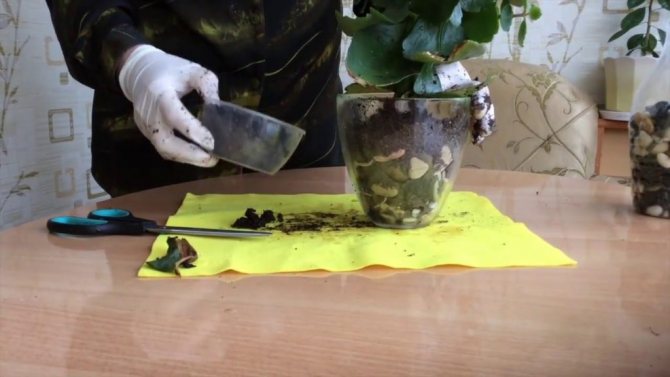

Useful video
You will learn how to properly transplant decorative Kalanchoe and make proper care from a short video:
If you find an error, please select a piece of text and press Ctrl + Enter.
Kalanchoe is a popular flower among indoor plant lovers. Many people like it, not only because of its unpretentiousness to care, but also flowering, which in some varieties is really fascinating.
The plant quickly adapts to home conditions after purchase, and with proper agricultural technology and maintenance, it is able to lay new and new buds for a long time.
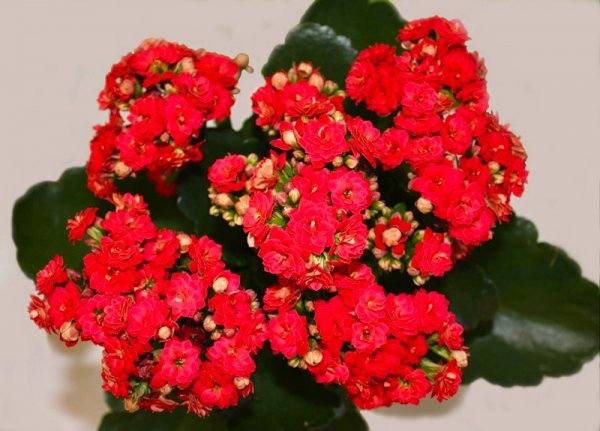

No rest period
For proper growth and flowering, the plant needs a dormant period. Usually it is organized in September or October so that the flower has time to bloom by winter. The rest period lasts one month.
To organize the rest of the flower, it is necessary to limit its watering and reduce the temperature of the content to 12-15 ° C. In such conditions, it hardly grows or stretches without intense sunlight. Some experienced flower growers recommend keeping the plant in complete darkness at this time and not watering at all. After the end of dormancy, the flower is gradually transferred to the usual watering regime.
Growing Kalanchoe all year round at room temperature and regular watering, it is almost impossible to achieve its flowering.
In winter, it stretches out strongly without sunlight, only weak shoots grow on it, on which flowers never form. And after a month of keeping cool with limited watering, the flower begins to intensively grow buds.
Cold air
No, we will not take it out into the cold. This is completely unnecessary. But to lower the temperature of the surrounding degrees of commercials to + 13-15 ° C is the very thing. We put the pot between the frames, or ventilate more often. Cover the radiators with a thick blanket or towel. We lay out snowballs or pieces of ice next to each other in separate trays. We put plastic bottles with frozen water around.
You can generally put on a warmed loggia or balcony. Or the coldest room in the house. In a word, get out as best you can. Otherwise, there will be no flowers for you.
Beneficial features
Kalanchoe is bred for a lot of useful properties - it is called a home doctor. How can the juice be used:
- With inflammatory processes in the middle ear.
- For instillation into the eyes.
- Disinfection and healing of skin wounds - bedsores, erysipelas, cuts.
To get a medicinal flower, you need to know which variety is suitable for this.In folk medicine, healing qualities are inherent in only two varieties of succulents - Peristome and Degremon.
The rest of the species - flowering - are not suitable for this purpose. In these varieties of Kalanchoe - pinnate and degremona - a special chemical composition of the juice, containing trace elements, polysaccharides, enzymes, tannins. The composition includes bryophylline - a substance with antitumor properties.
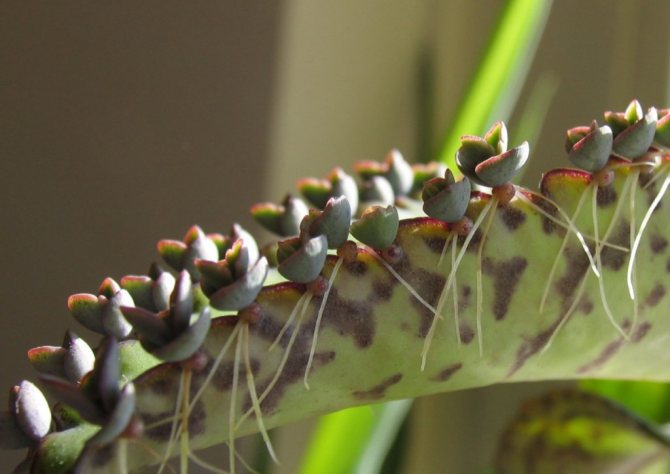

Diseases
Kalanchoe diseases are rare, but occasionally there are still fungal infections. Usually, an indoor flower copes with the disease on its own if you reduce watering.
If the plant is heavily infested, it can be helped with fungicide treatments and a gentle watering schedule. Since the soil can also be infected with fungus, it must be completely changed, the root system must be examined and dead parts removed. With the right approach, recovery will not be long in coming.
If you pay attention to the Kalanchoe, it is enough to simply understand the reason for the lack of flowering. Following certain recommendations, you can change the situation in your favor and wait for the appearance of bright flowers on the indoor plant.
Why Kalanchoe does not bloom, but grows up: 8 main reasons
Most often, we get the plant with lush flowers, framed by a compact rosette of leaves. But after 1.2-2 months, the succulent is stretched out and loses all its decorative effect. The following factors predispose to this:
- Lack of knowledge about care - the seller said that the flower is unpretentious and does not require attention.
- Lack of light - to get more light, the shoots are drawn out.
- Excess moisture - if you water it too hard, the roots rot easily.
- Late transplant - for example, in the midst of flowering.
- Too oily soil - in nature the Kalanchoe is accustomed to poor rocky soils with good drainage.
- Long daylight hours - flowering buds are laid when daylight is reduced.
- The room is too warm - the succulent plant blooms during the tropical winter.
- Lack of haircuts - the plant does not have enough resources to form new peduncles.
Please note: in nature, all types of Kalanchoe have distinct periods of rest and growing season. However, the temperature conditions are very different.
Sparse stony soil
The tropics are not just a jungle with a greasy substrate of centuries-old compost. The tropics are also deserts, mountainous and flat. Most of the Kalanchoe species grow in mountainous areas with poor rocky soil. There is not much to eat there, the root system also has nowhere to turn around.
And look what you have? A pot the size of a good bucket, wear fertilizers almost with shovels. What kind of flowers are you? Your Kalanchoe is simply fattening. We urgently need to change everything!
We take a tiny container for planting. Here are just a little more root system, on the centimeter from the strength. We collect the following soil:
- sand
- gravel
- garden land
- coal
- turf
We take everything in equal parts. No doubt, the mixture turns out to be cruel and rough. But on the other hand, it is the closest to natural realities. Here we transplant the Kalanchoe into it. Let him find out where the crayfish hibernate and how to deprive the owners of flowering.
Naturally, no fertilizers. Not a drop at all. And even give a crumb of organic matter to another flower. Kalanchoe will make up for its spring and summer, when you will treat it with top dressing for a lush and bright flowering.
how to care for dracaena at home
Varieties for growing at home
To start a medicinal Kalanchoe, you need to know how to care for potted succulents at home. The most common variety is Degremona. Its leaves are elongated, with pointed tips, have a gray color. It reproduces by children, which are formed along the edge of the leaf plate, then fall to the ground and take root.
If Kalanchoe officinalis does not bloom, you do not need to do anything. Flowering takes a lot of nutrients and strength, which affects the medicinal properties. Other succulents can be bred for flowering.
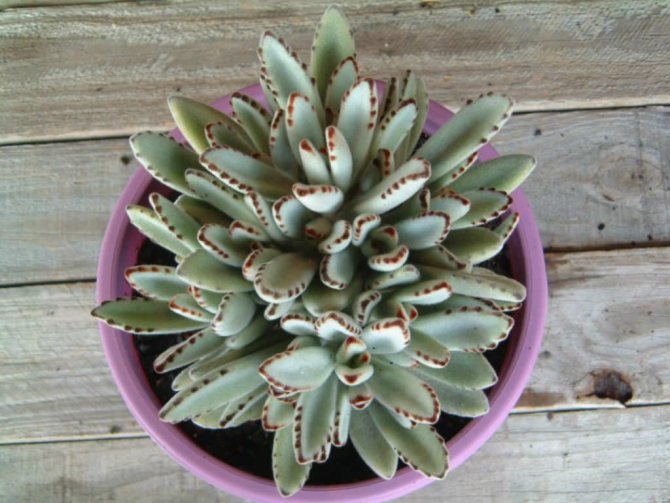

Another medicinal variety - the pinnate Kalanchoe - has oval leaves of a light green hue. In appearance, it is very different from the Degremona variety, so they cannot be confused.
Which varieties are suitable for decorative purposes:
- Tubular is an interesting variety with one central stem and gray leaves rolled into tubes. Blossoms with a brush of red bells.
- Mangina is an ampelous species with a large number of red peduncles.
- Kalandiva - has red double flower stalks with a lush dark green rosette of rounded leaves.
- Felt - with pubescent multi-colored leaves and the same shaggy flowers - is a very unusual plant.
- Marble is a variegated form, the leaves of which are painted with purple spots on a light gray background.
- Figueredoi - the color of the leaves is almost white with many strokes of a deep lilac color.
There are a lot of varieties for home cultivation, some of them are considered rare, it is difficult to get them, therefore it is recommended to study the peculiarities of the growth and care of flowering Kalanchoe.
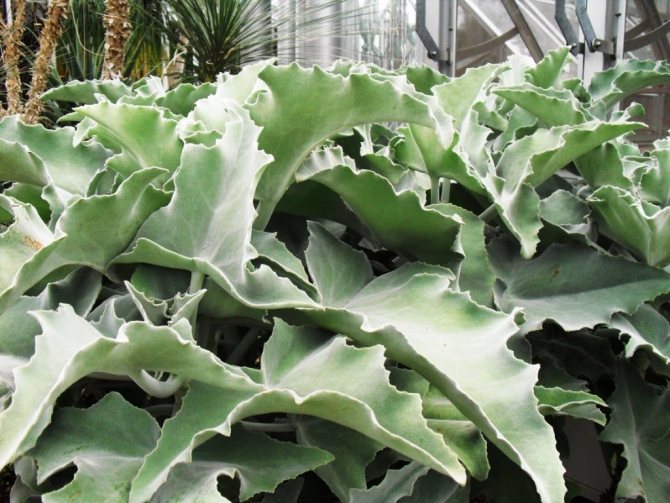

Transplant features
Ornamental Kalanchoe needs regular replanting. After all, its root system grows rather quickly. The ideal time for transplanting is considered the month of April-May. This is the period of active plant growth. At this time, the length of daylight hours should be about 12 hours. Therefore, if necessary, use additional lighting devices.
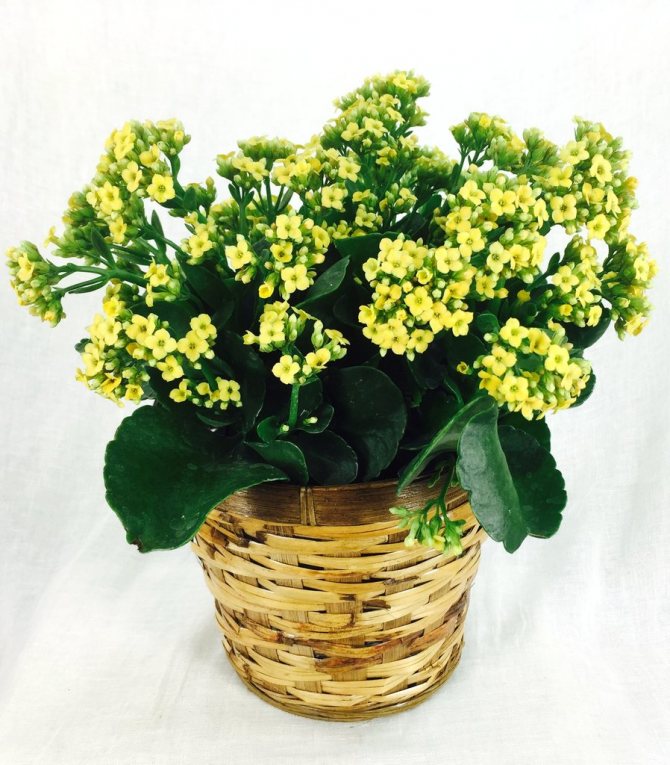

Pay special attention to the choice of the pot. It should be much wider than the previous one. The composition of the soil should be identical to the previous one. The plant must be carefully removed from the container. Make sure that the earthen ball is not damaged.
The quality of the soil for a blooming clanchoe is practically irrelevant. This flower grows well in both loose and dense soil. Often the soil is mixed with a little sand.
Experienced flower growers recommend preparing a soil mixture of coarse sand, leaf humus, turf soil, taken in equal proportions. You can also take half a piece of brick chips or charcoal.
Before planting, the soil must be disinfected with a solution of potassium permanganate.

